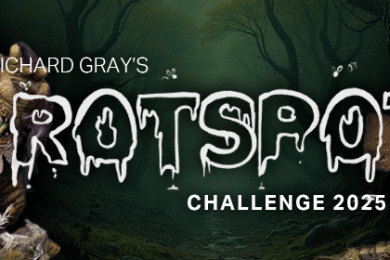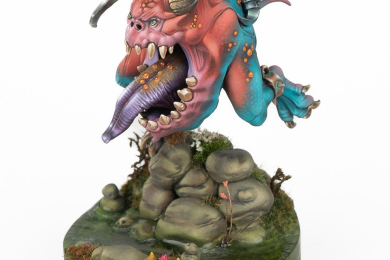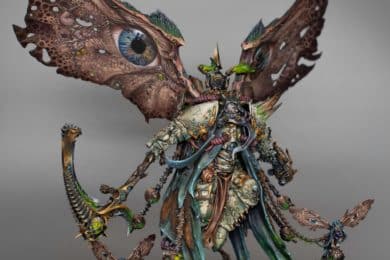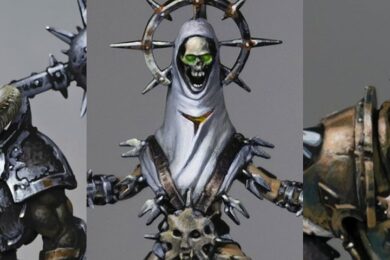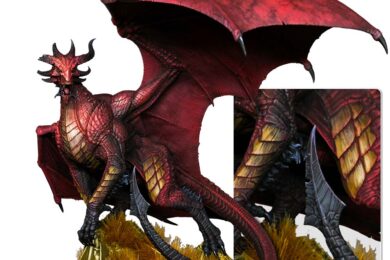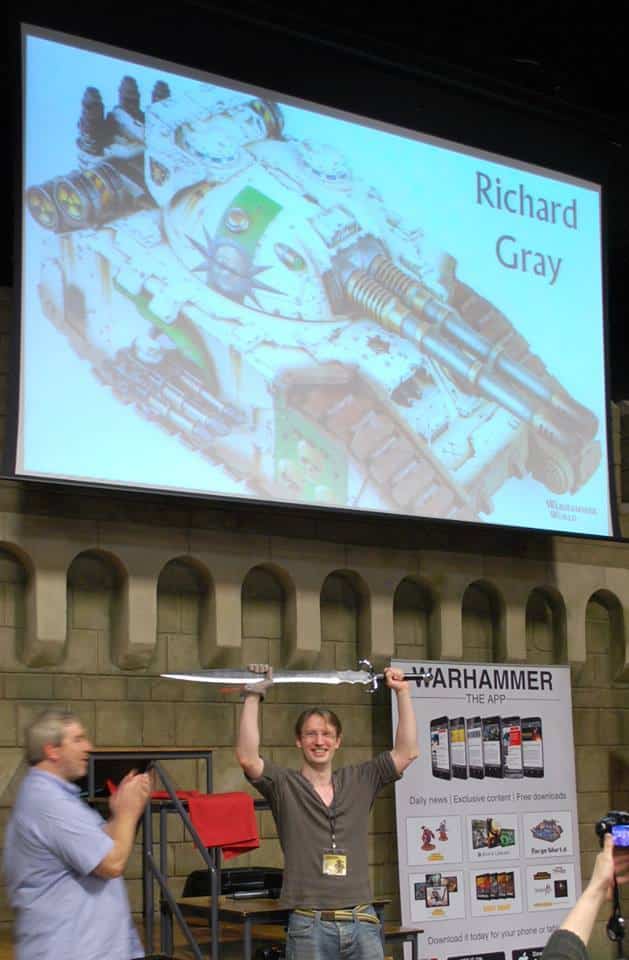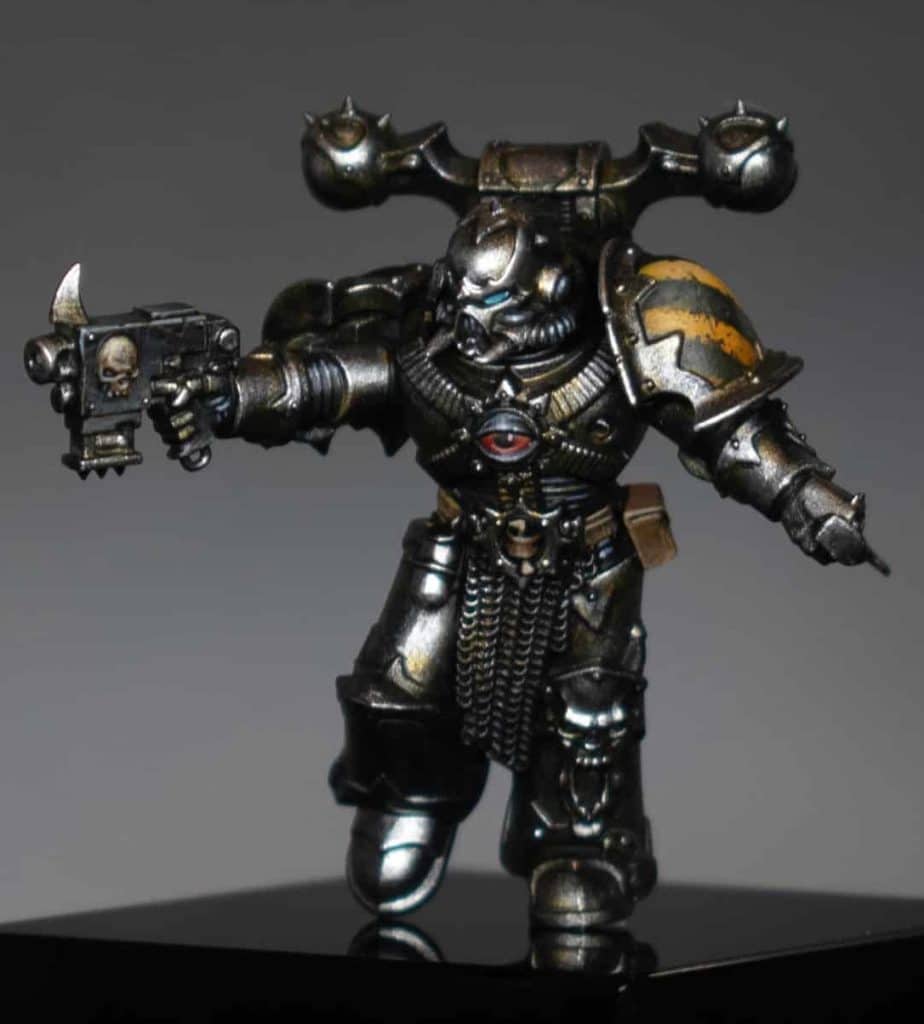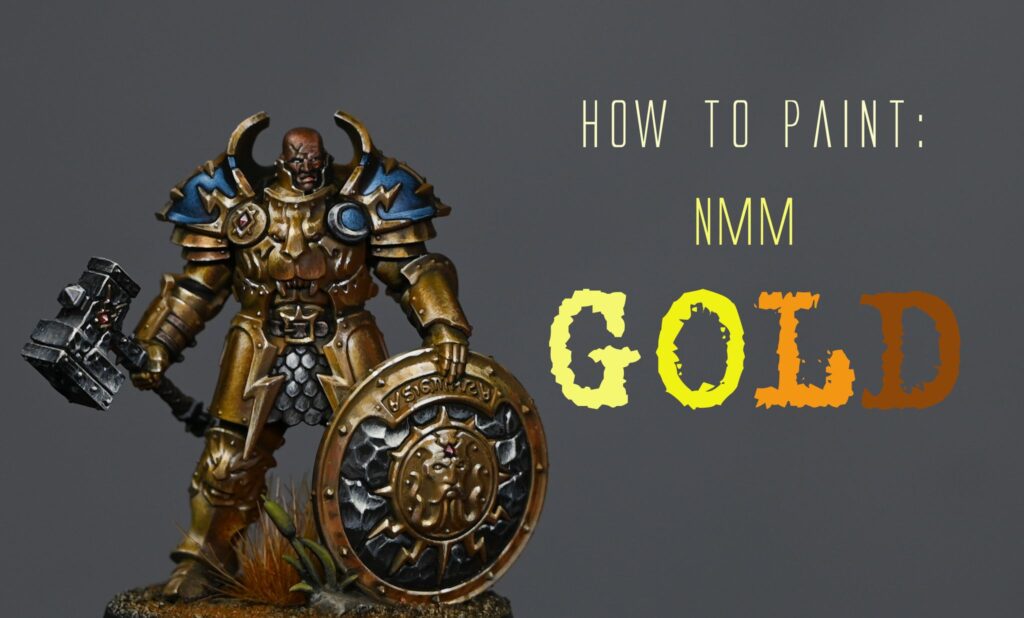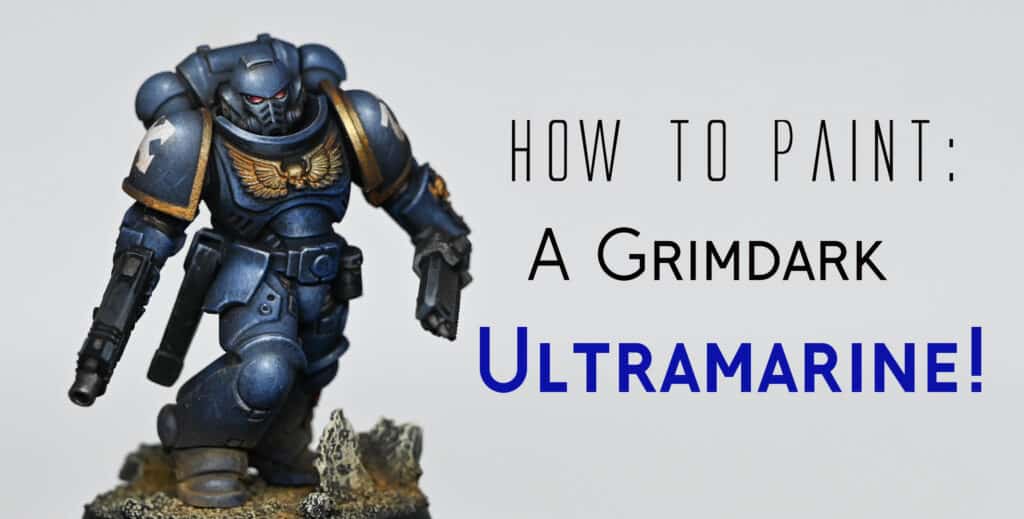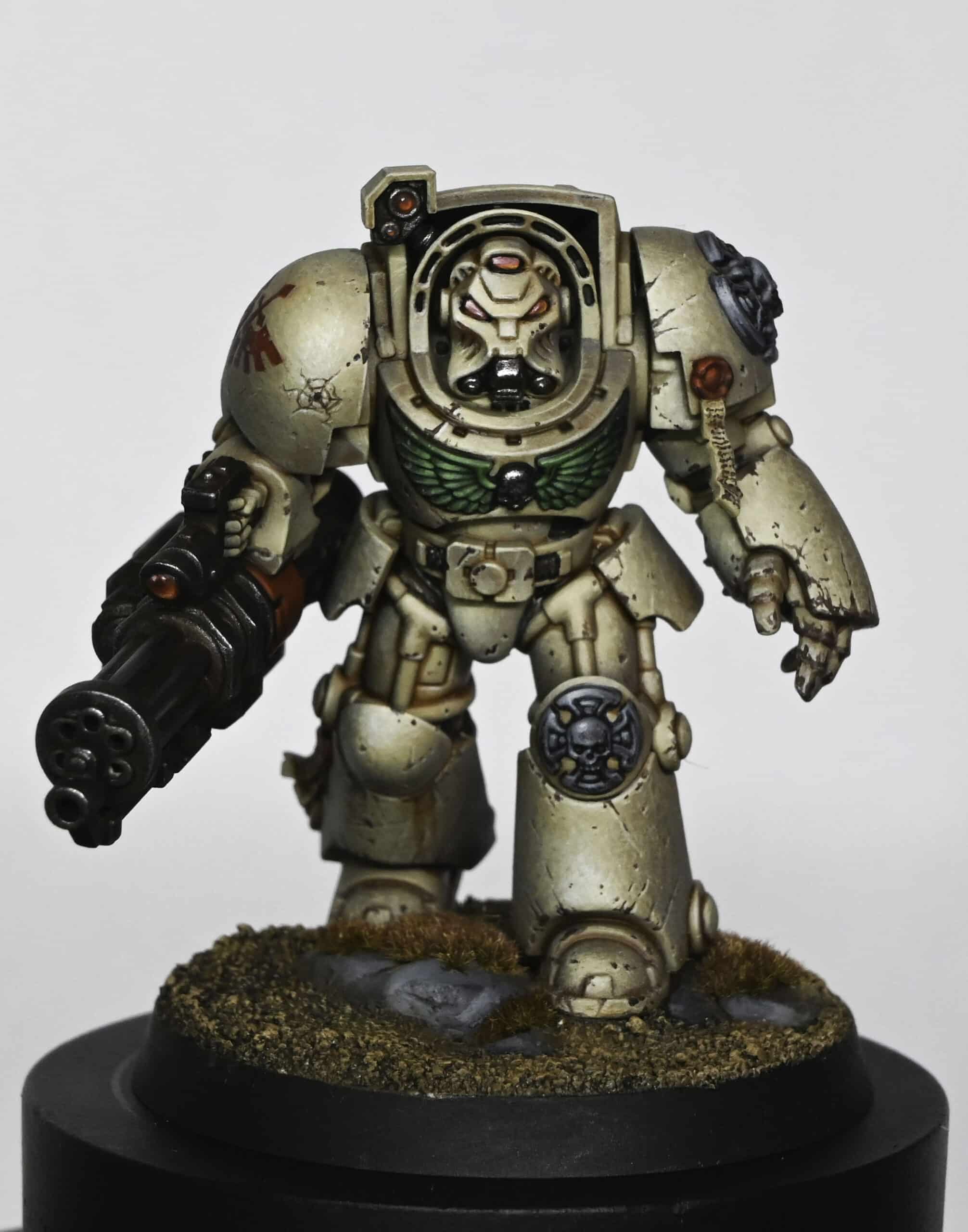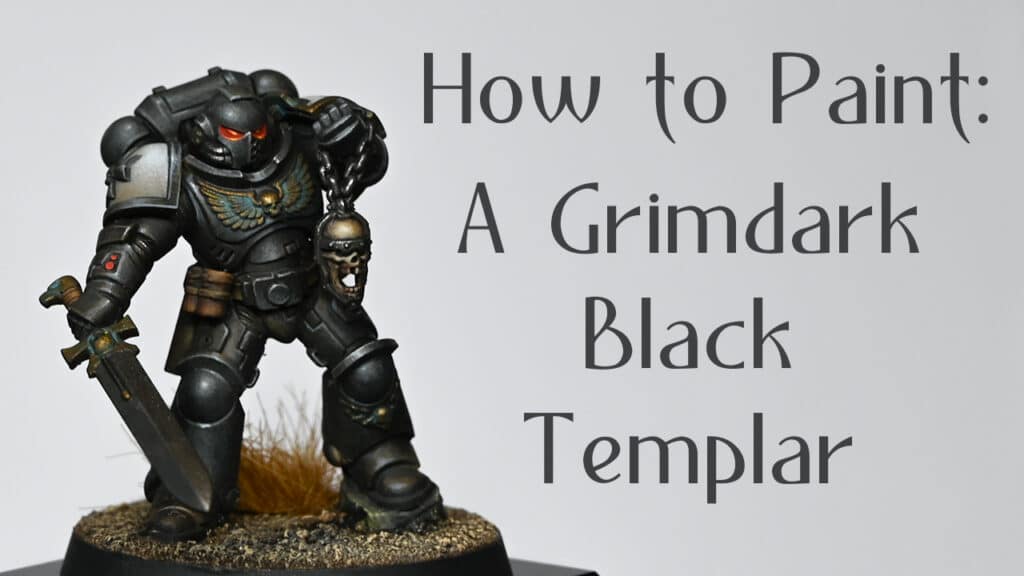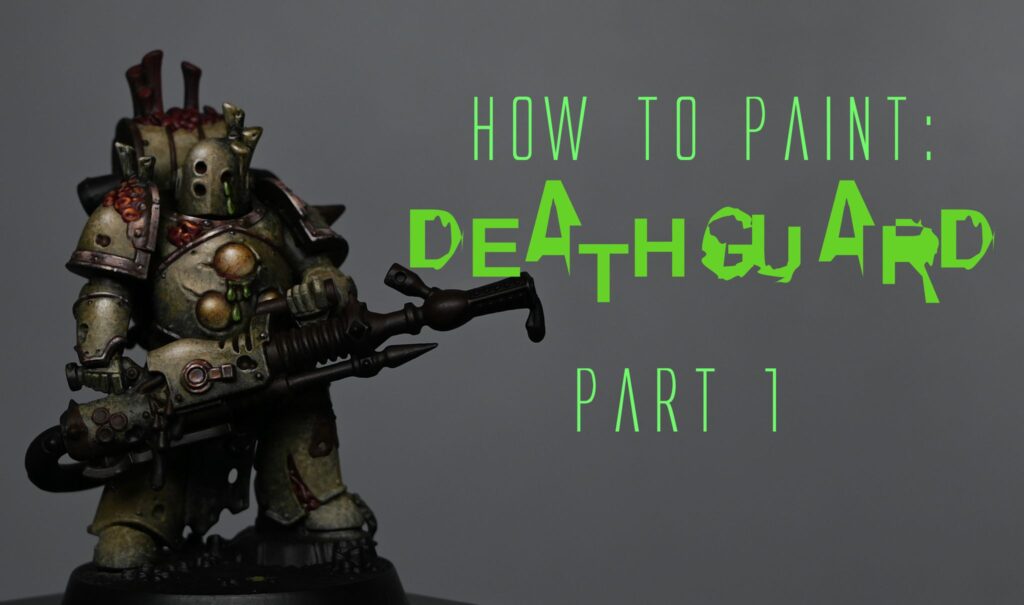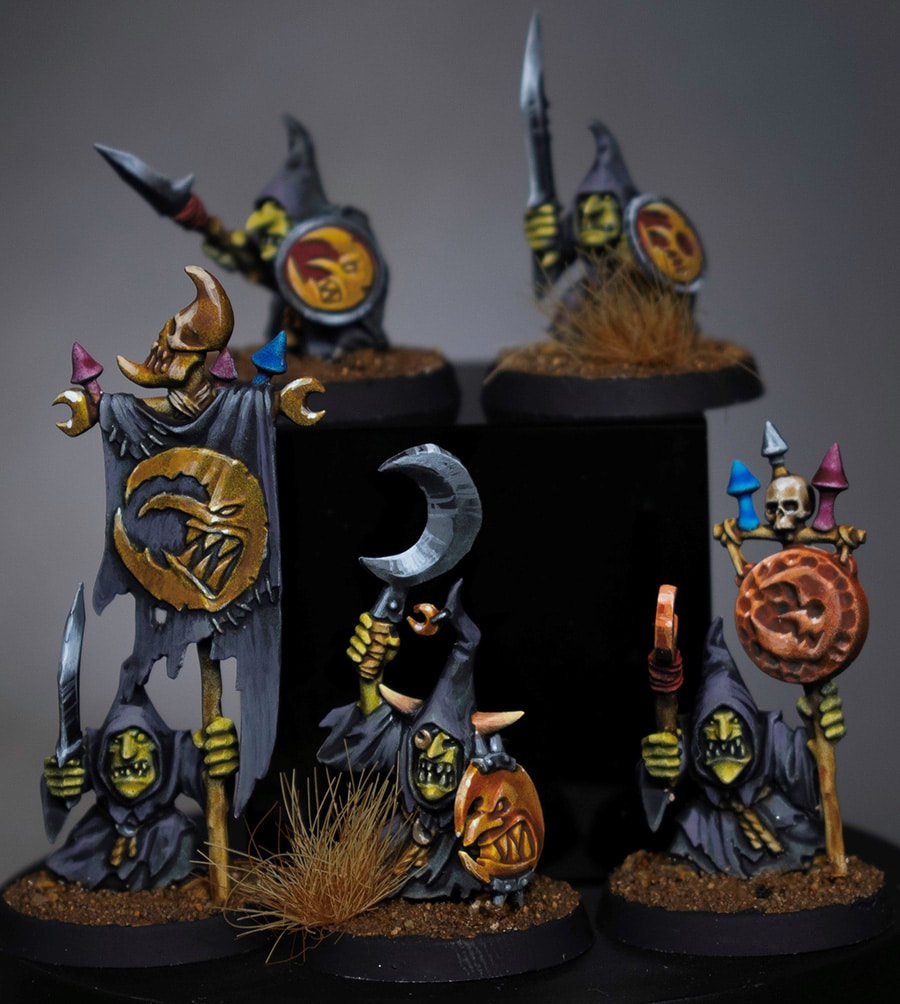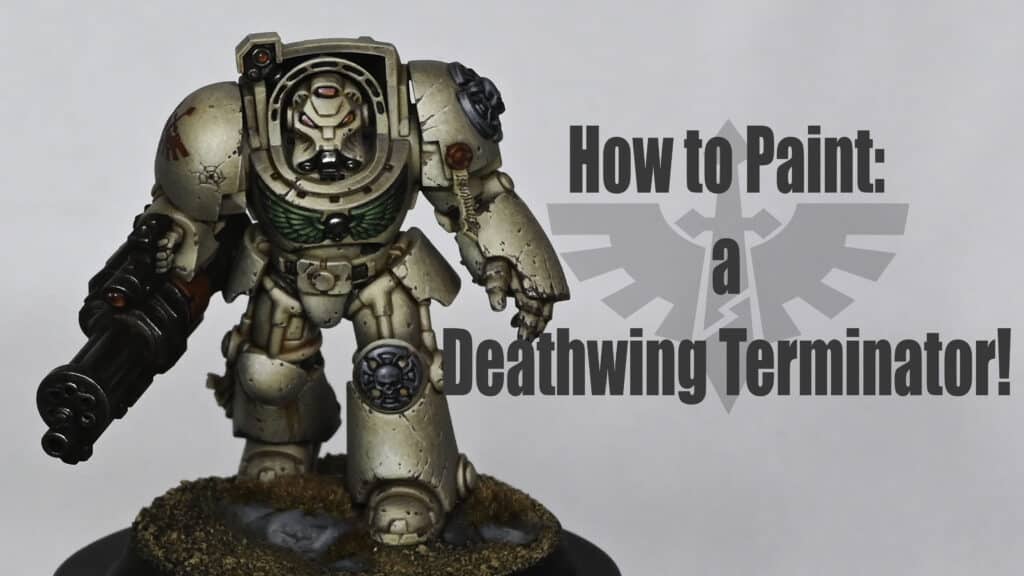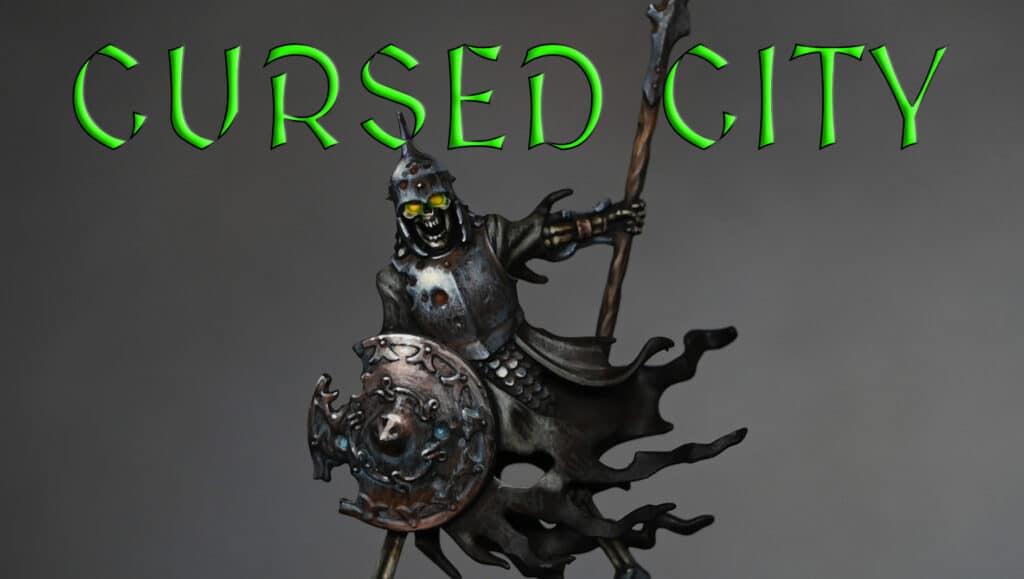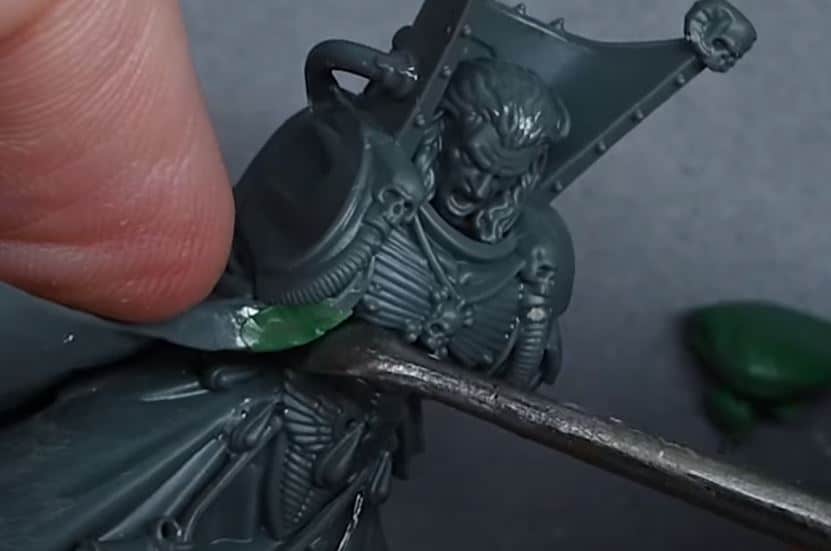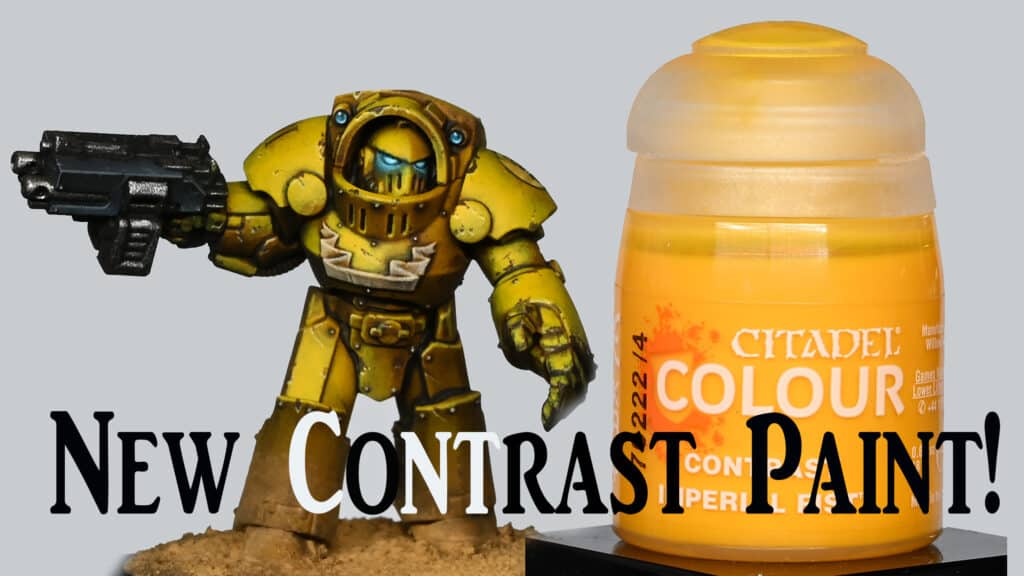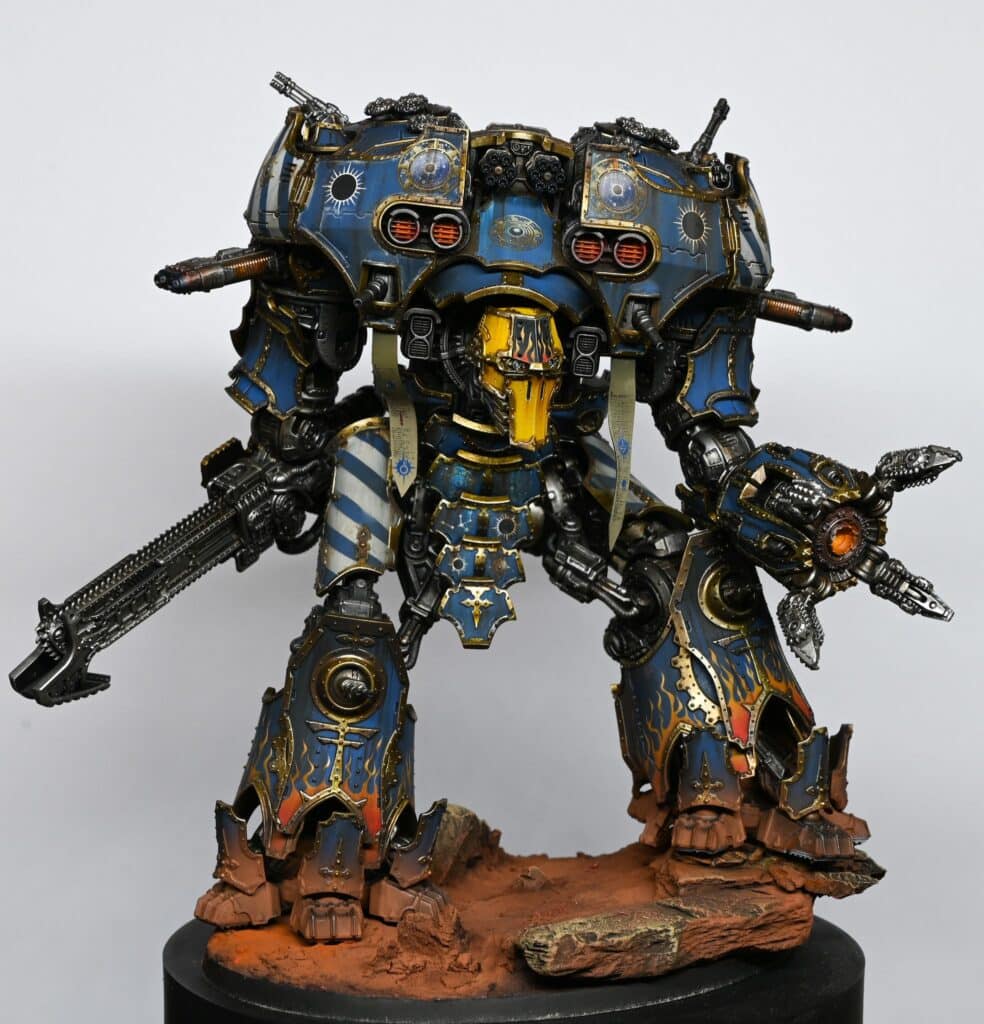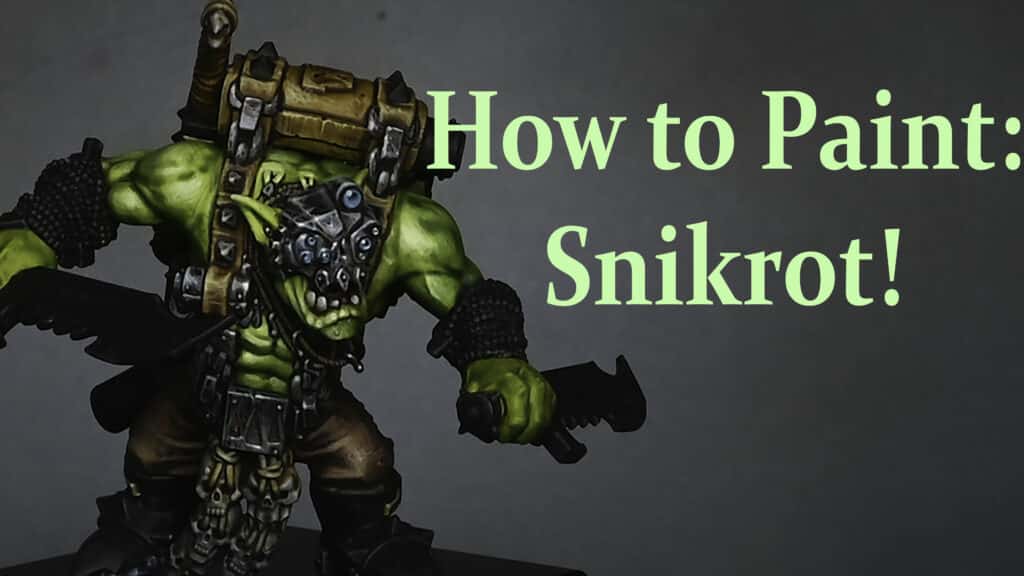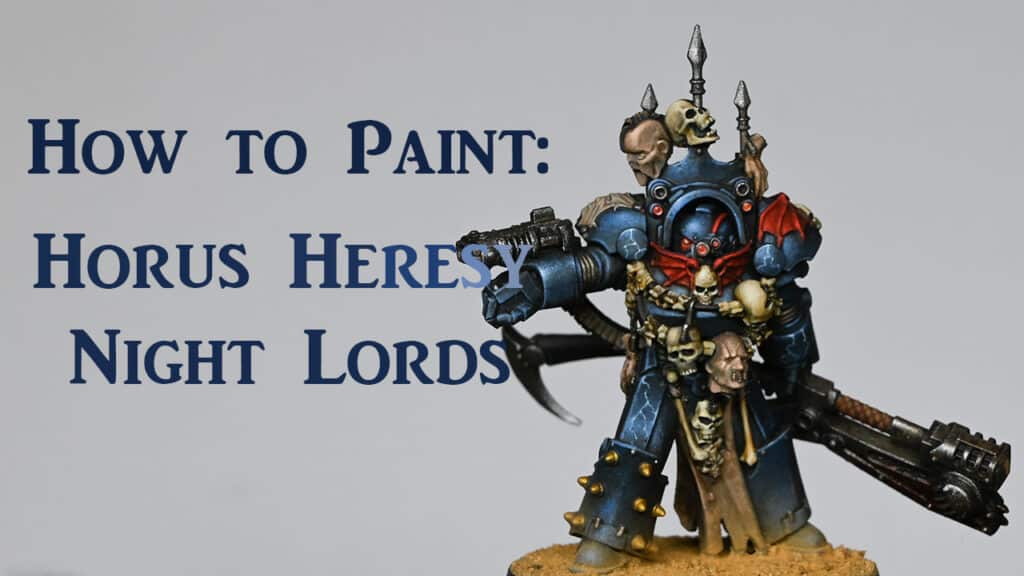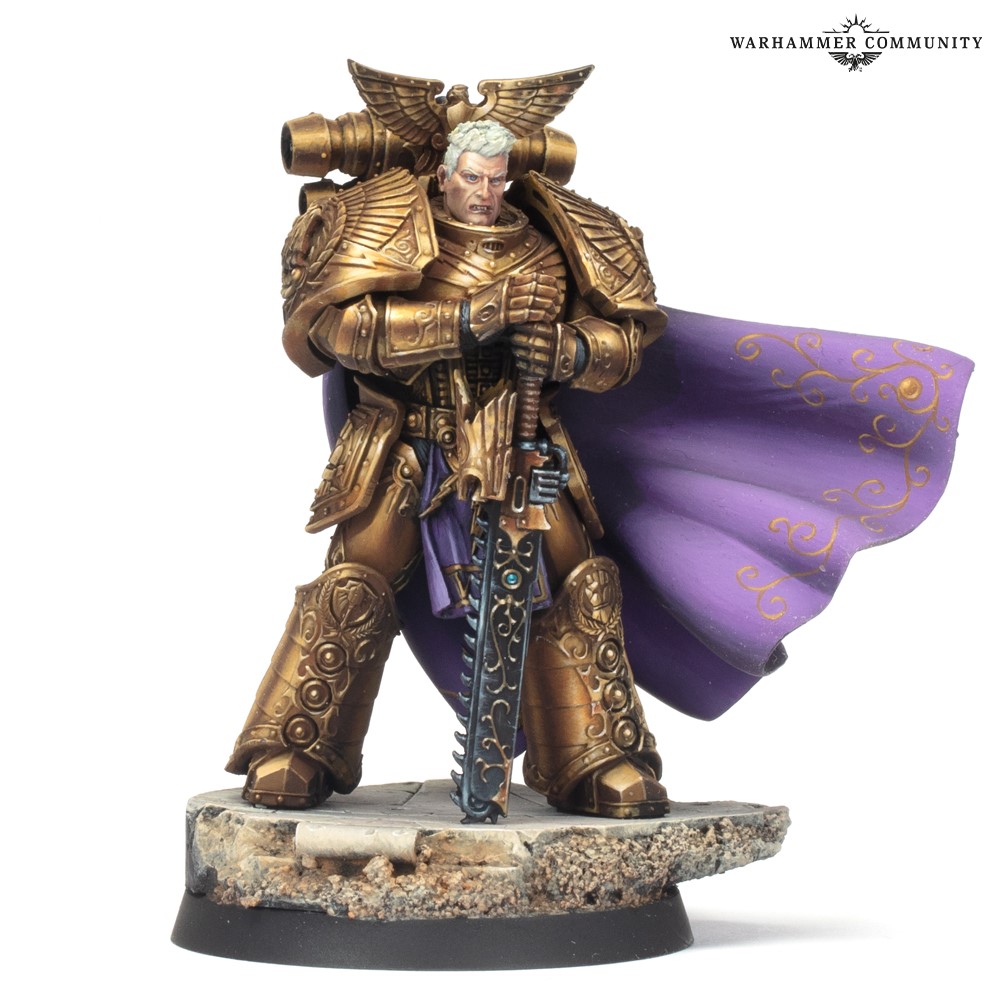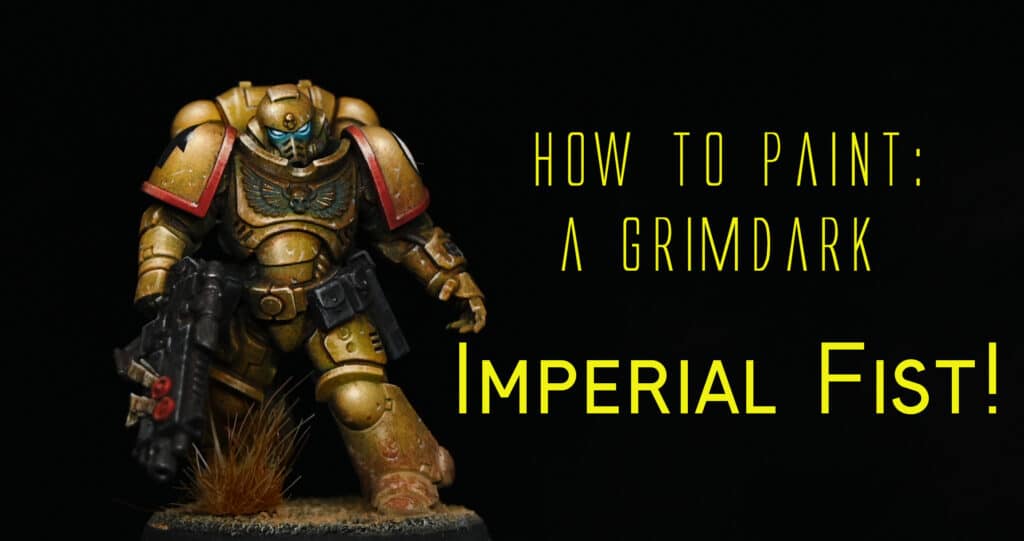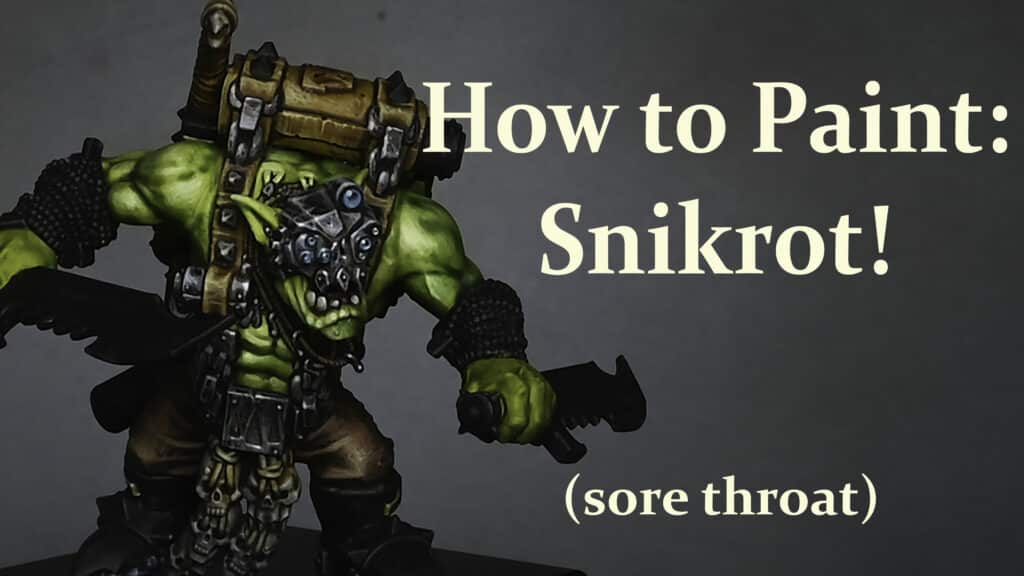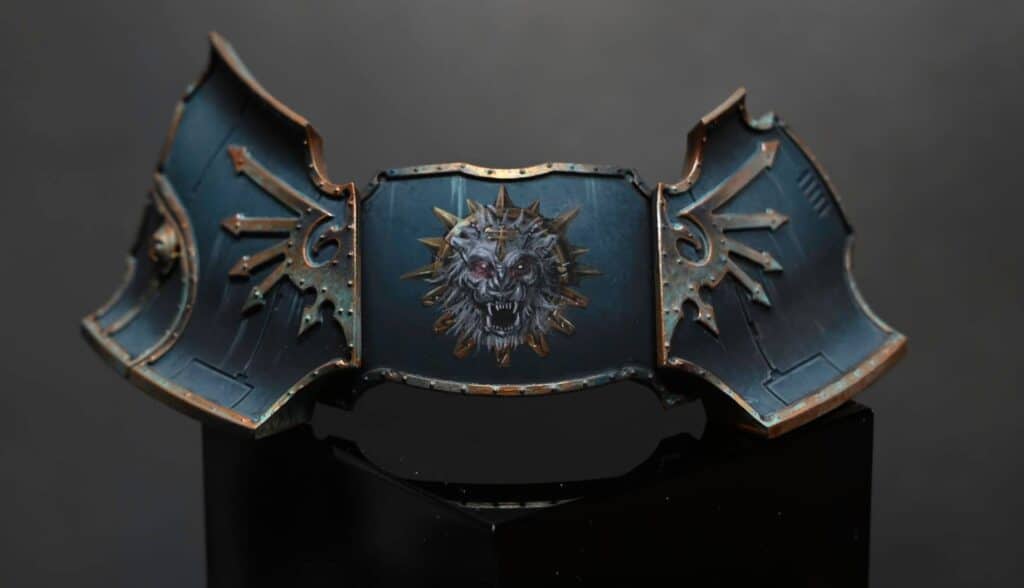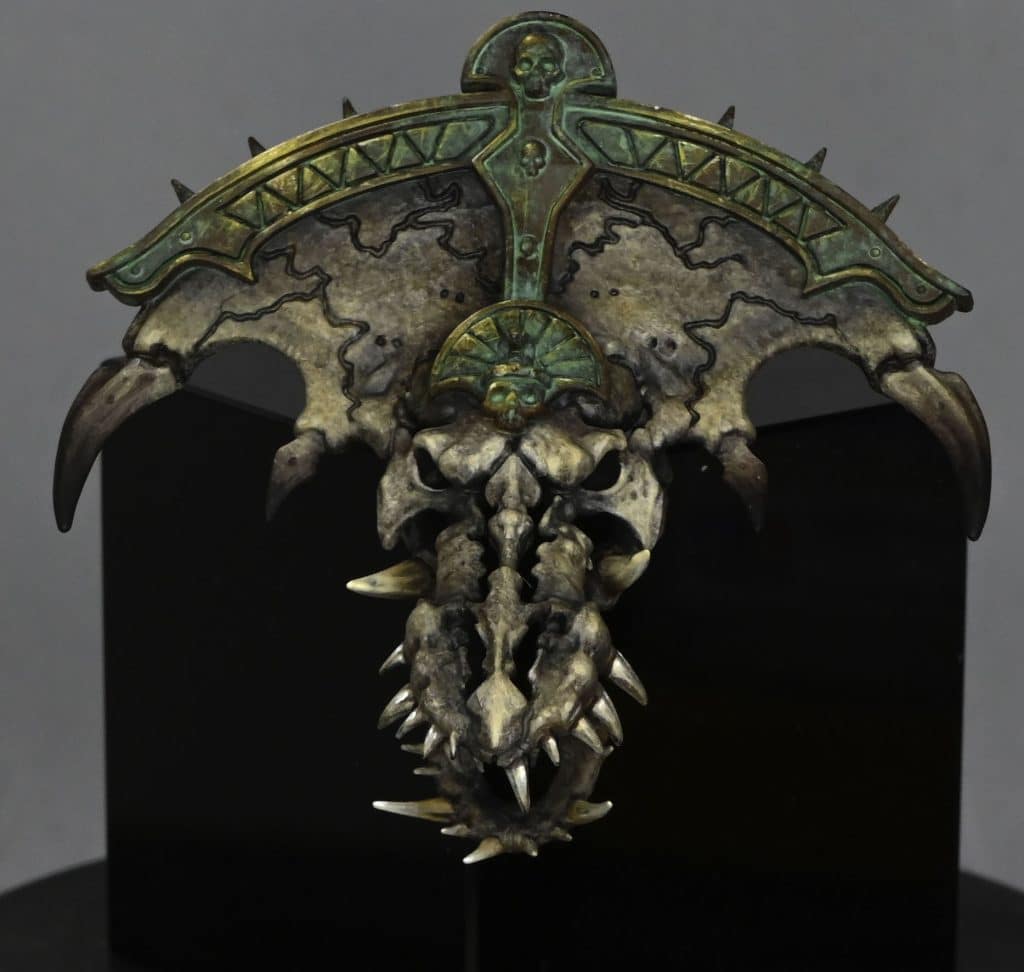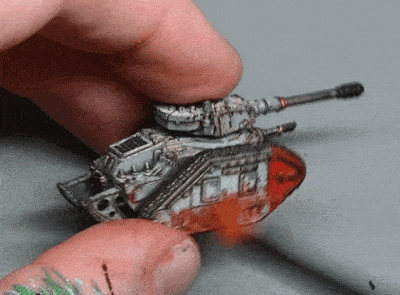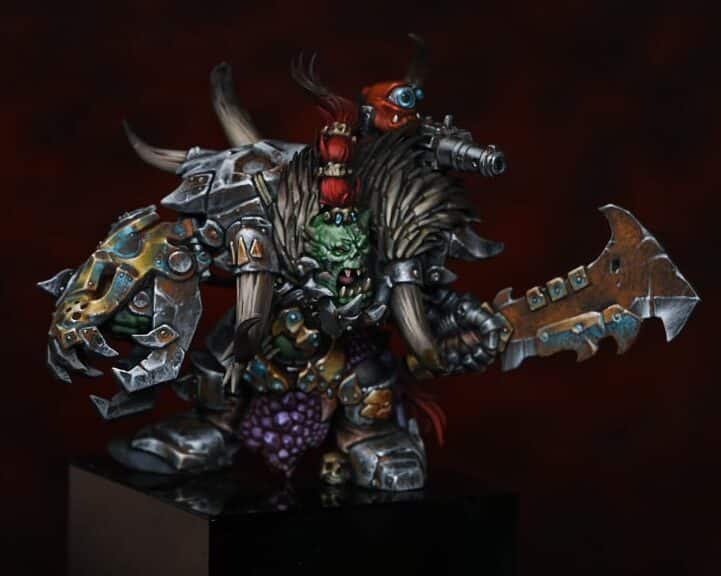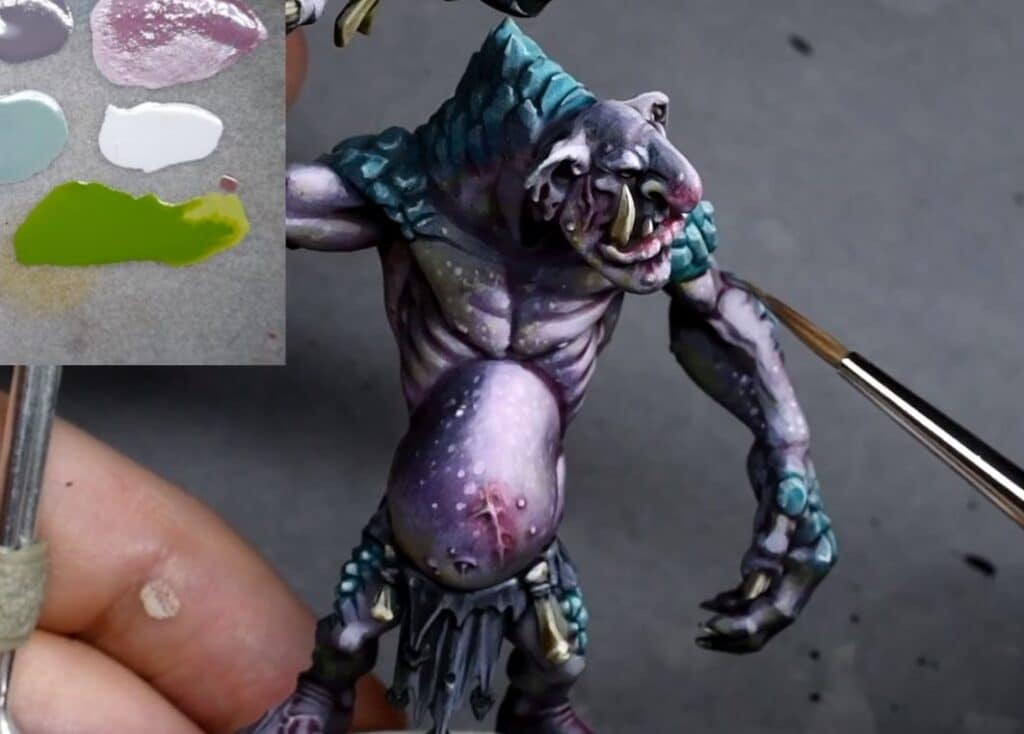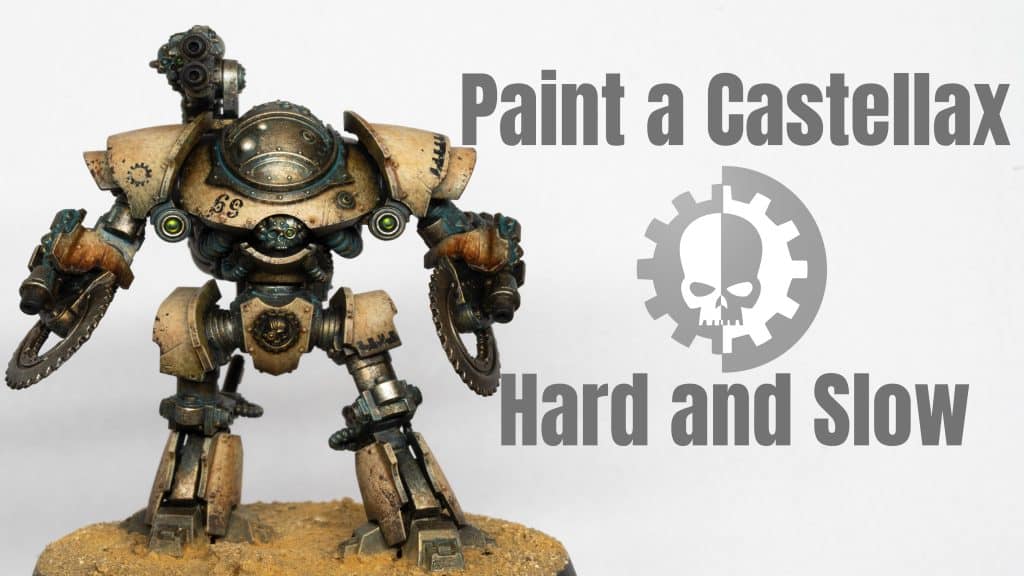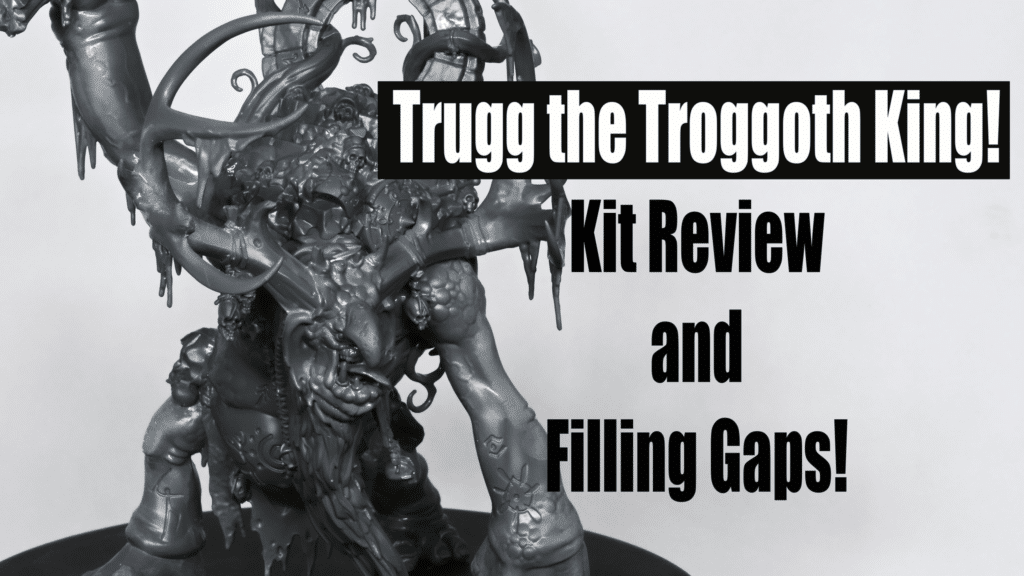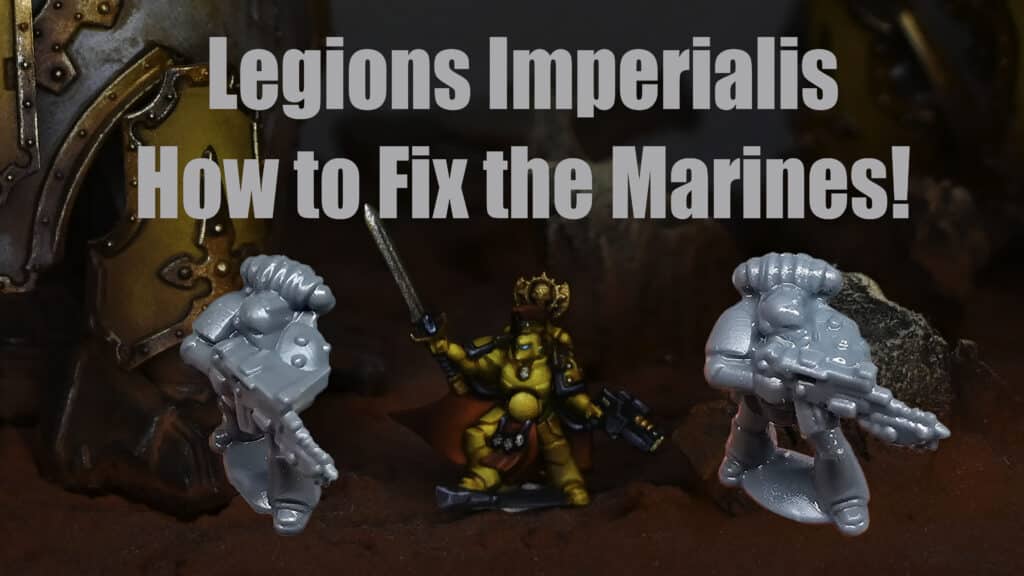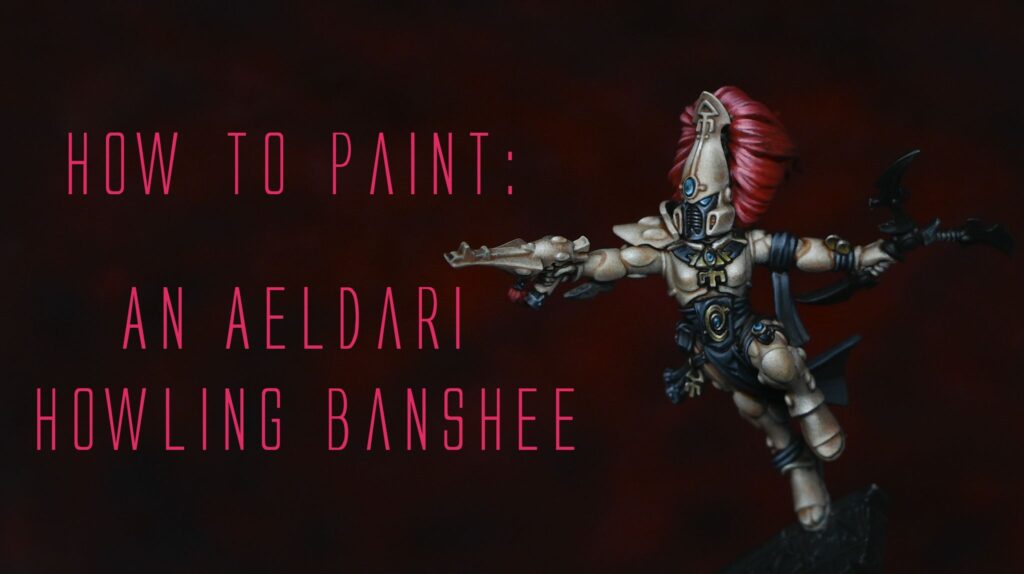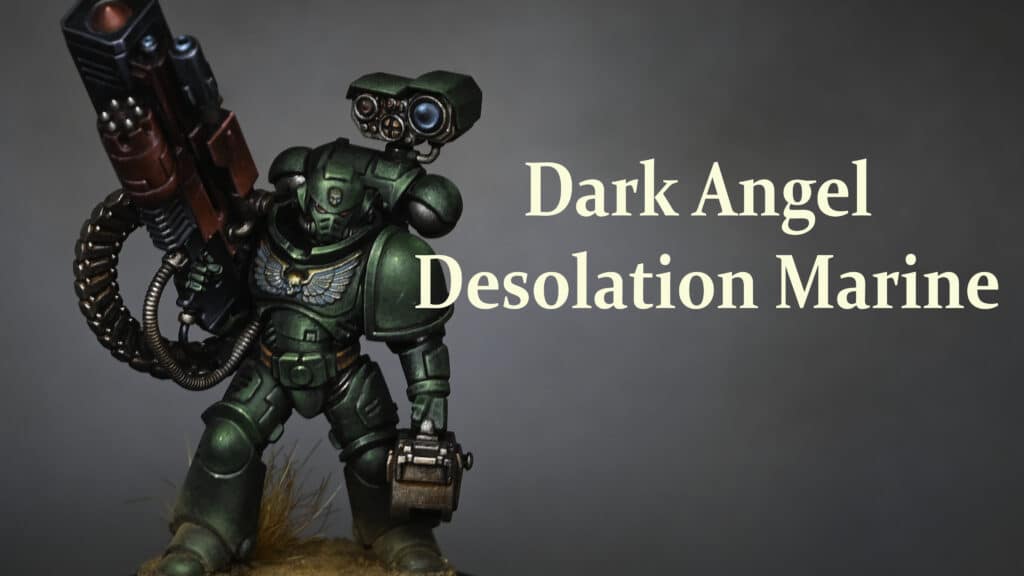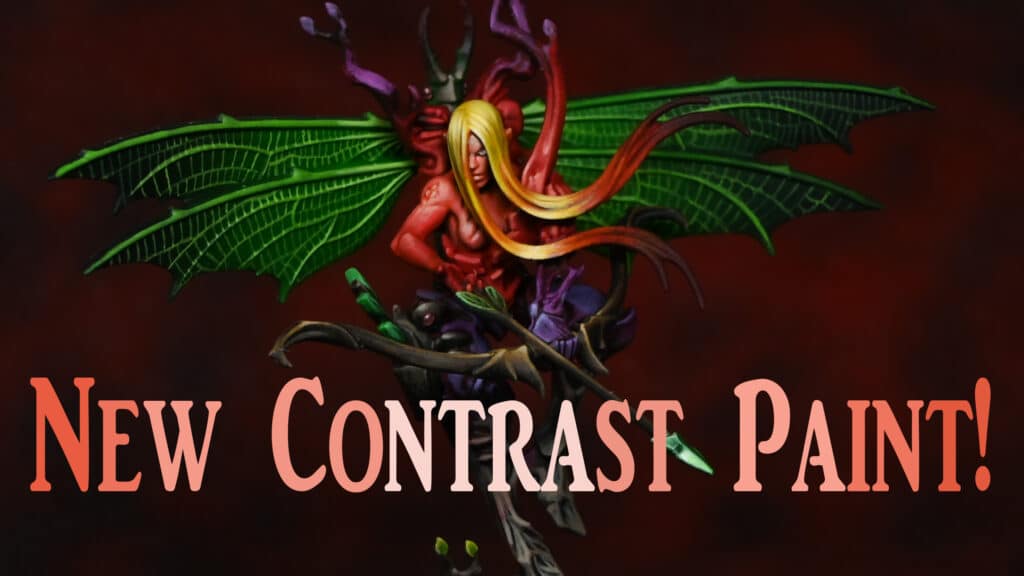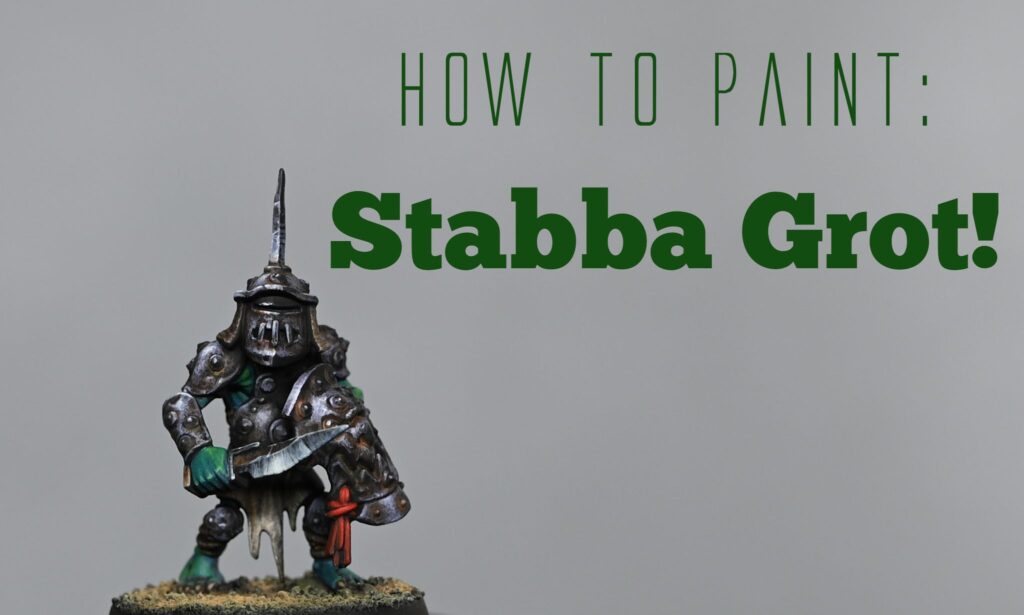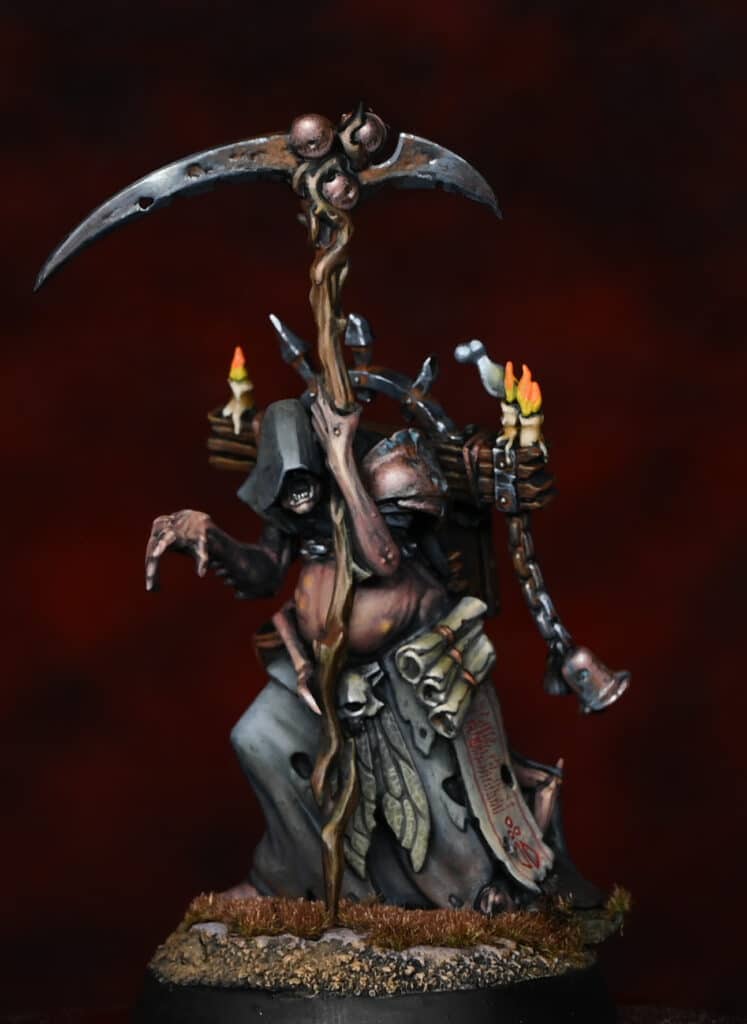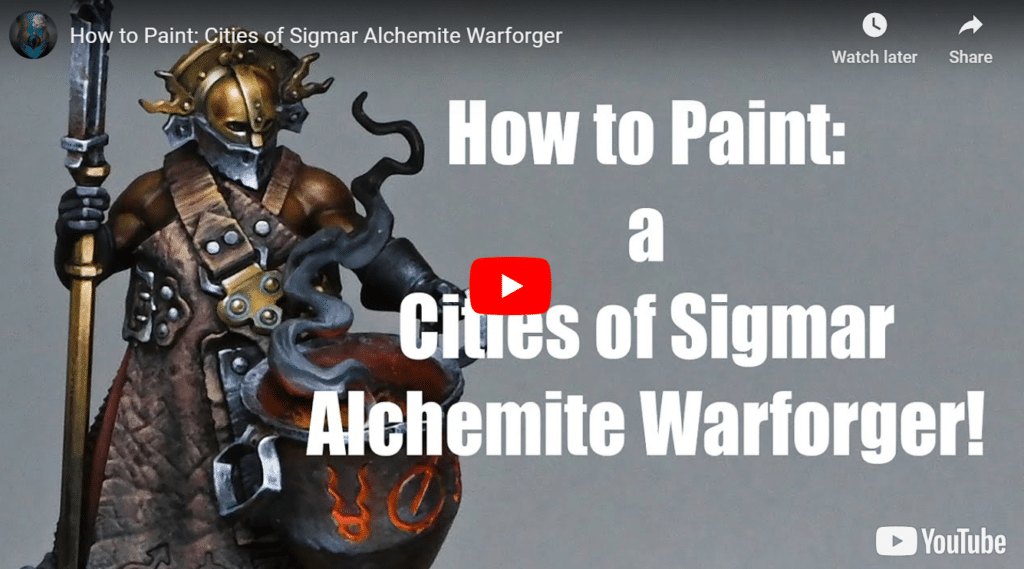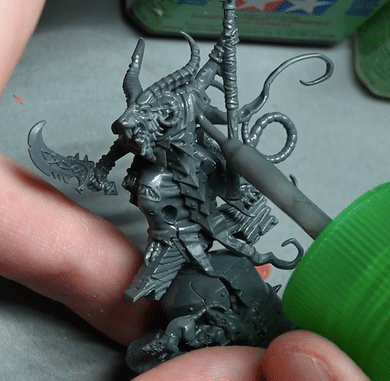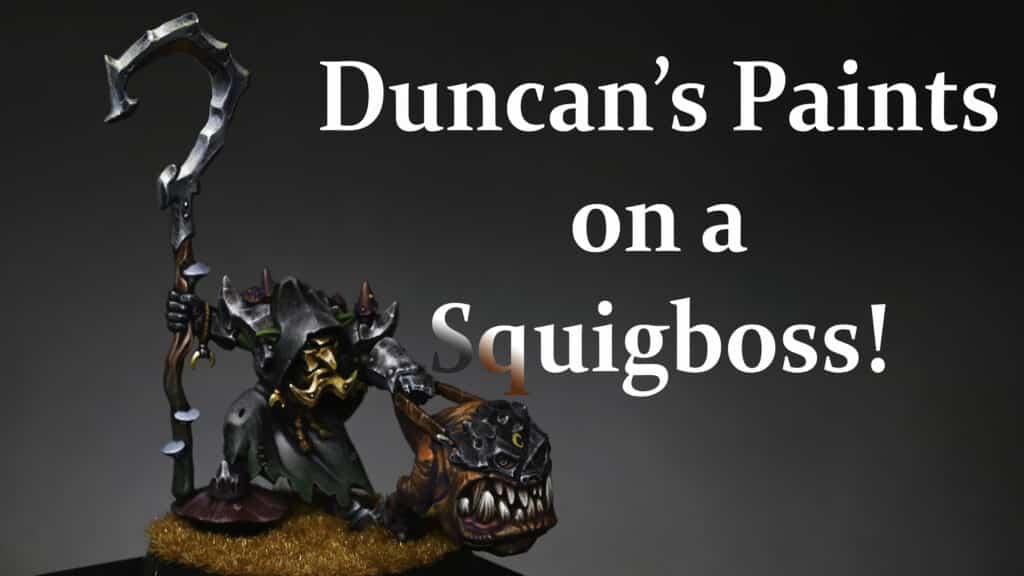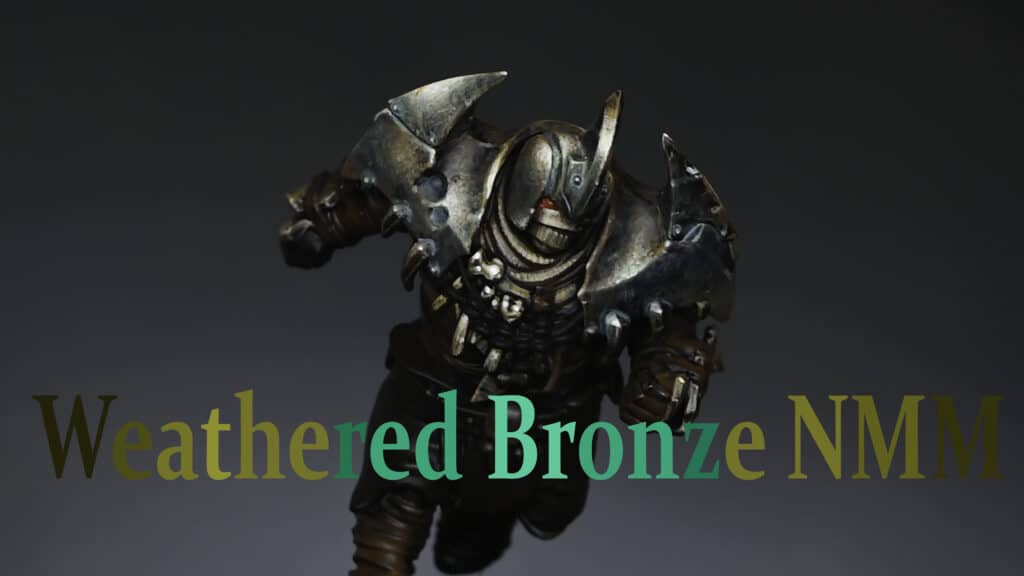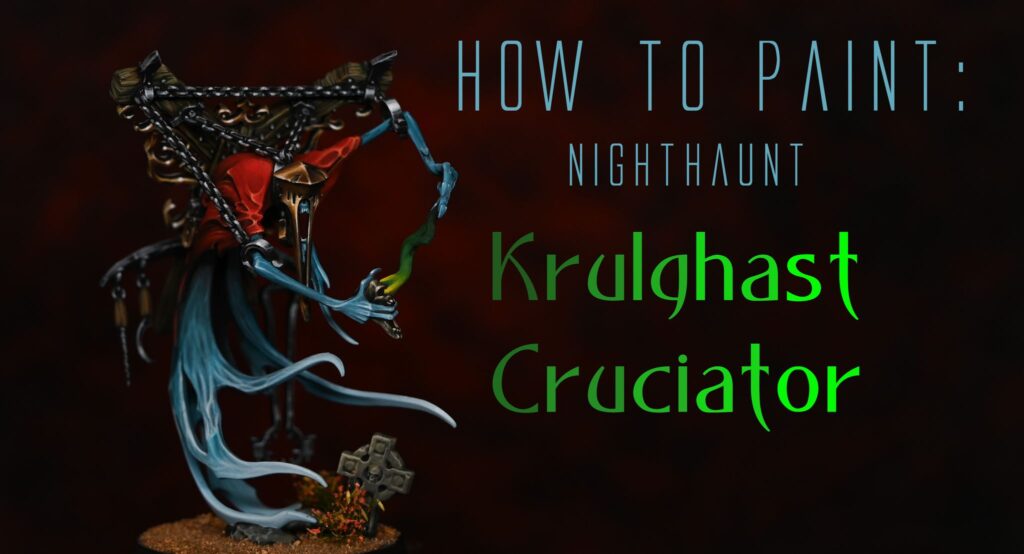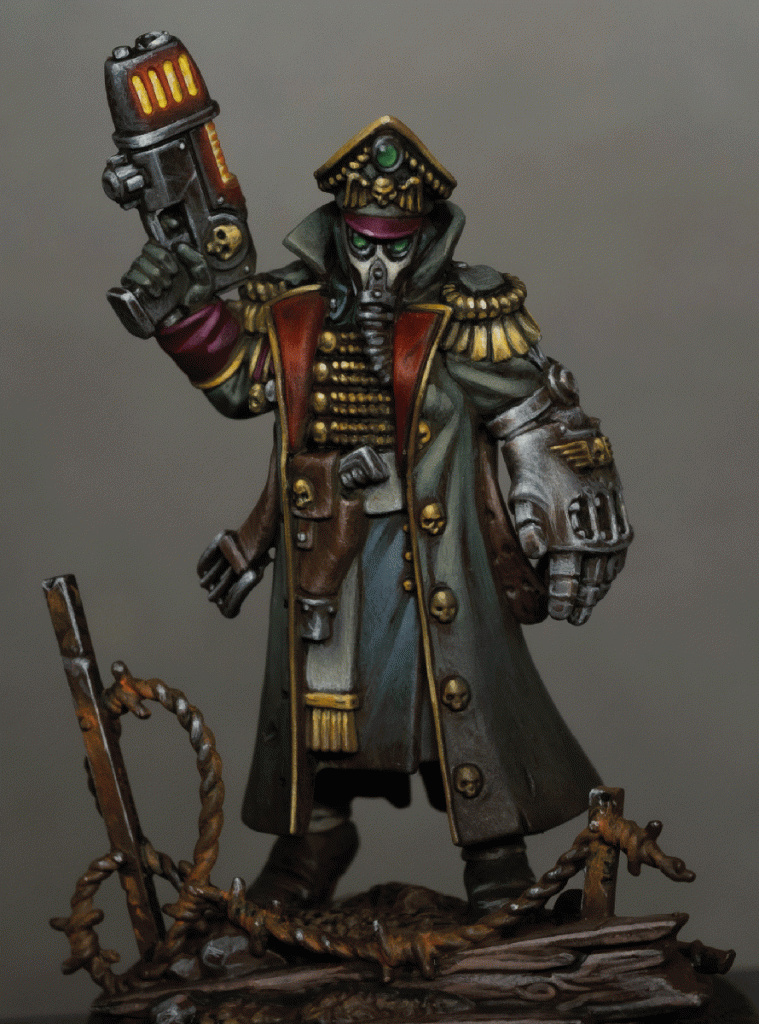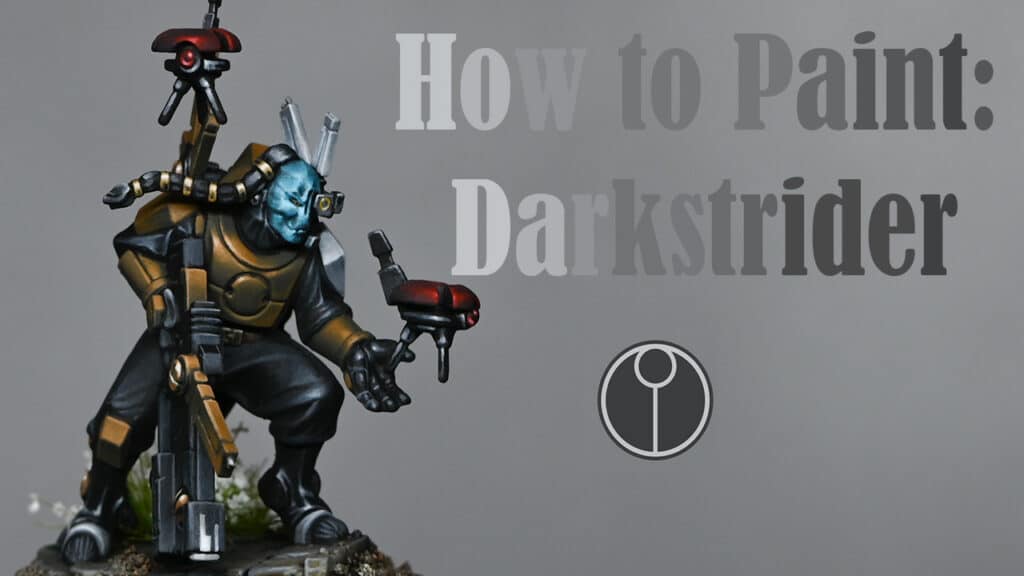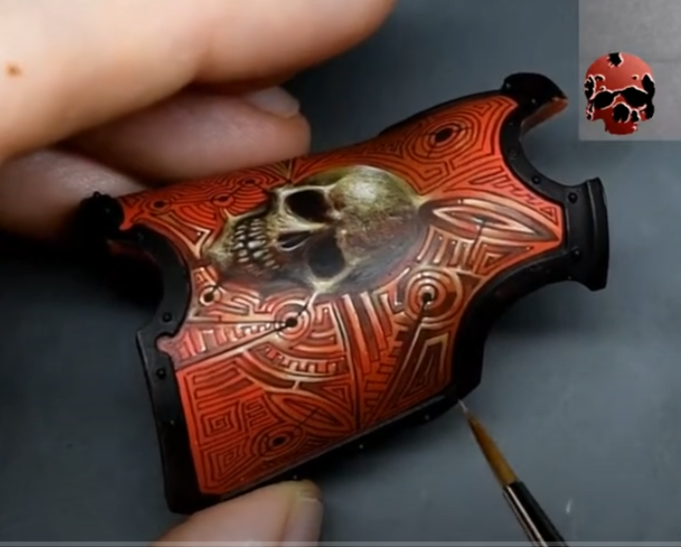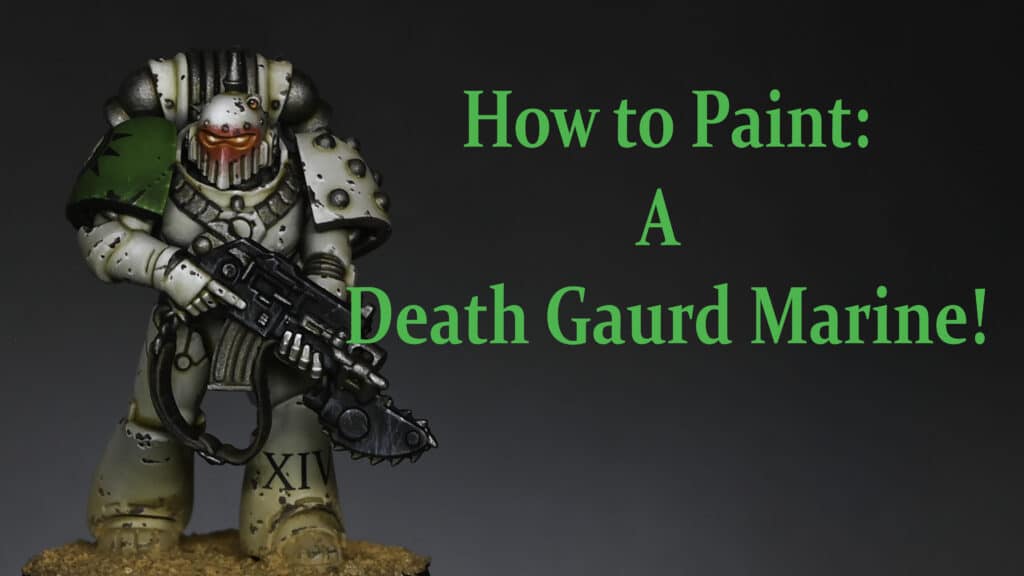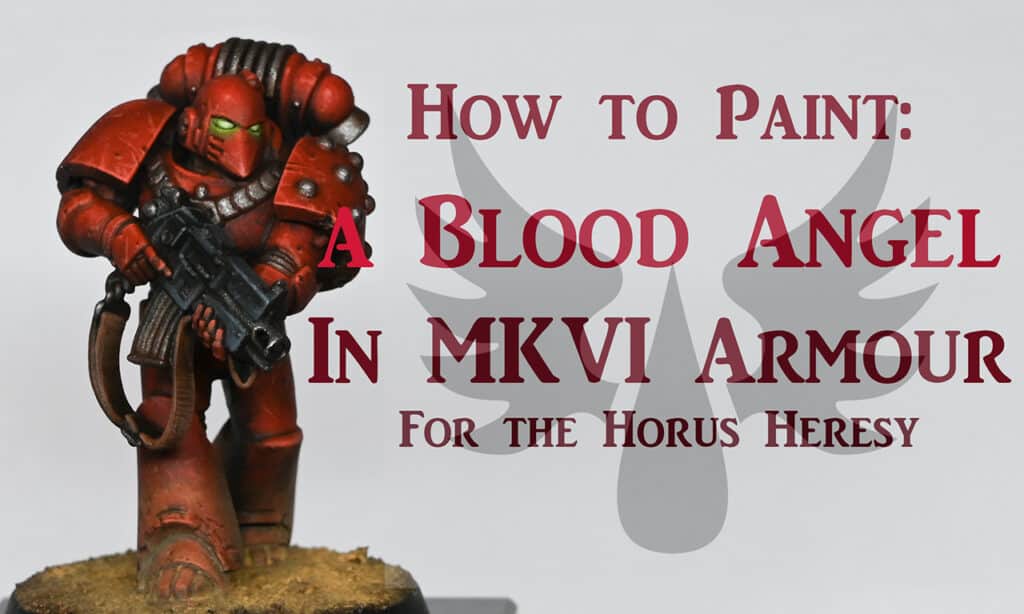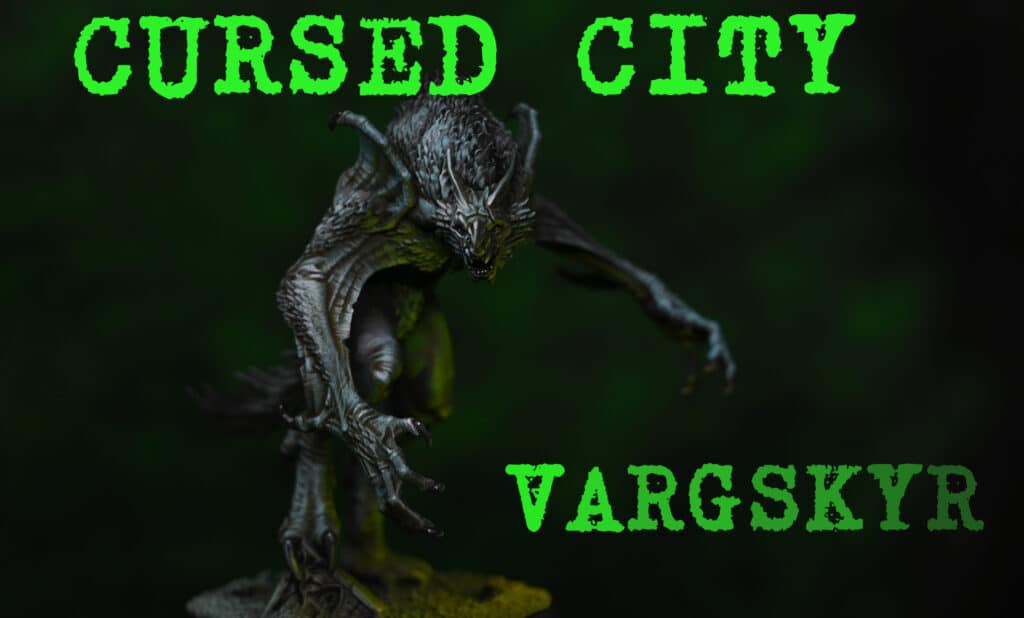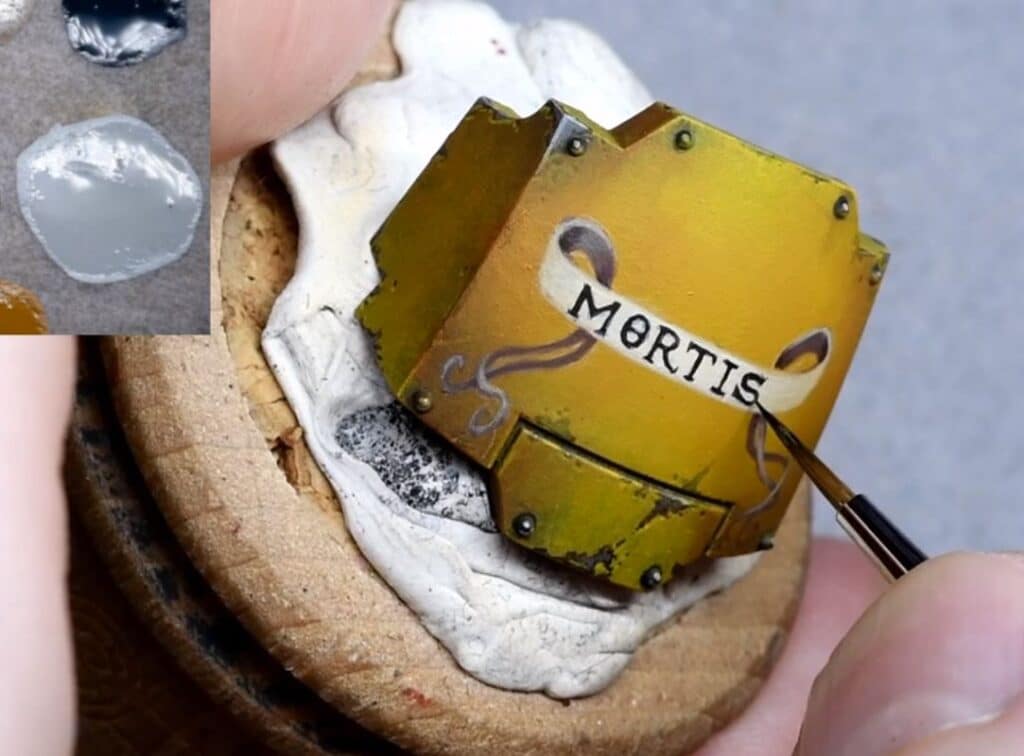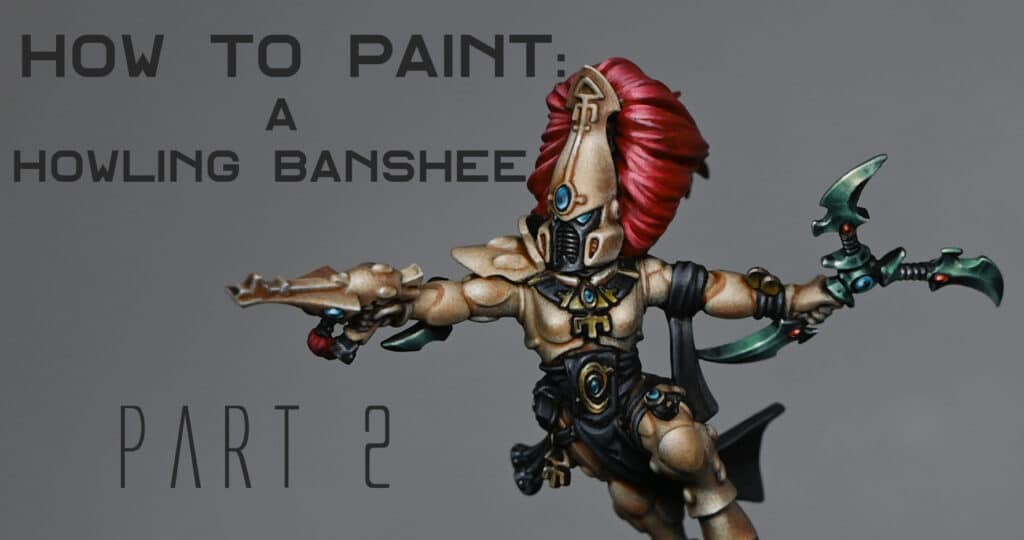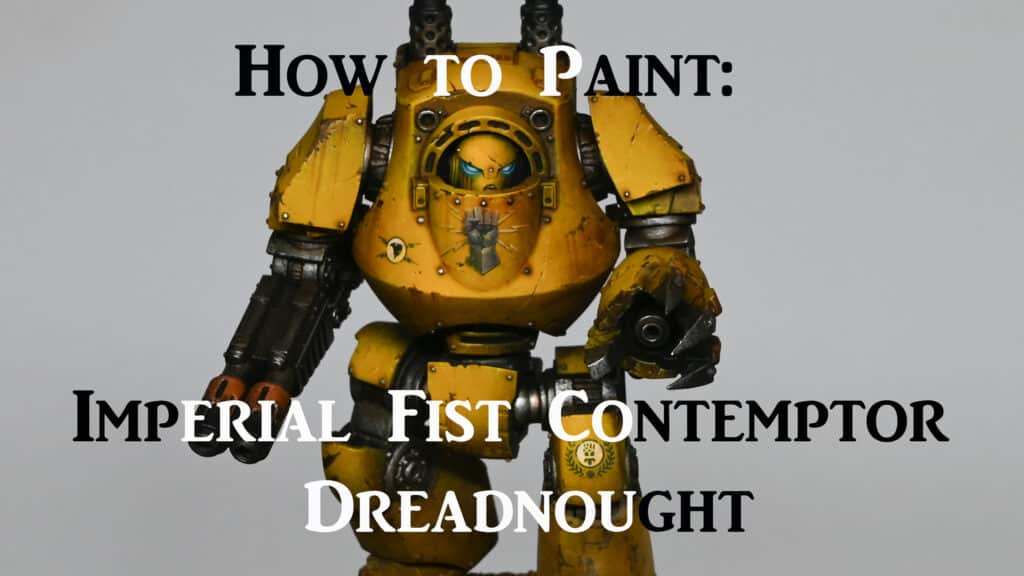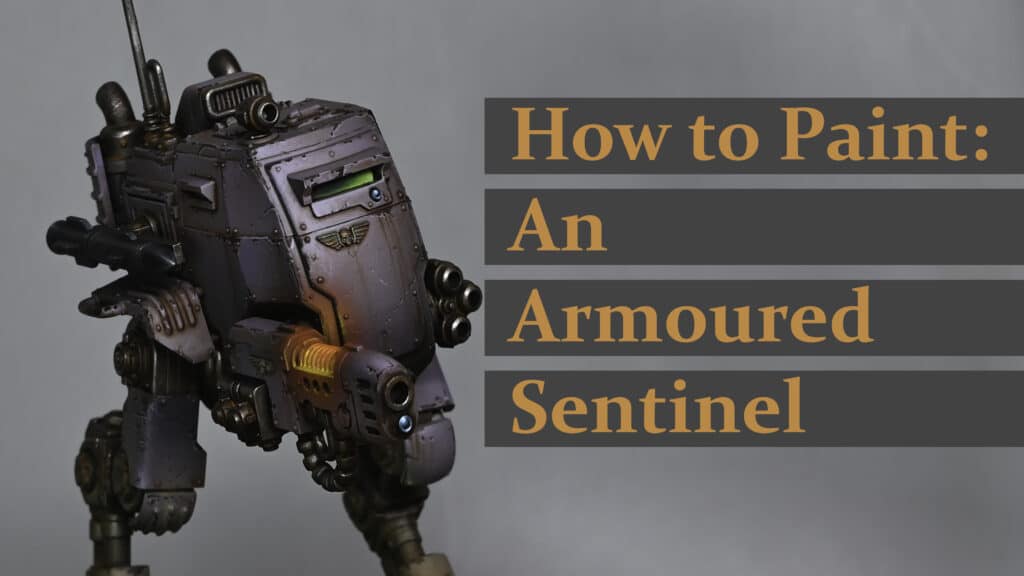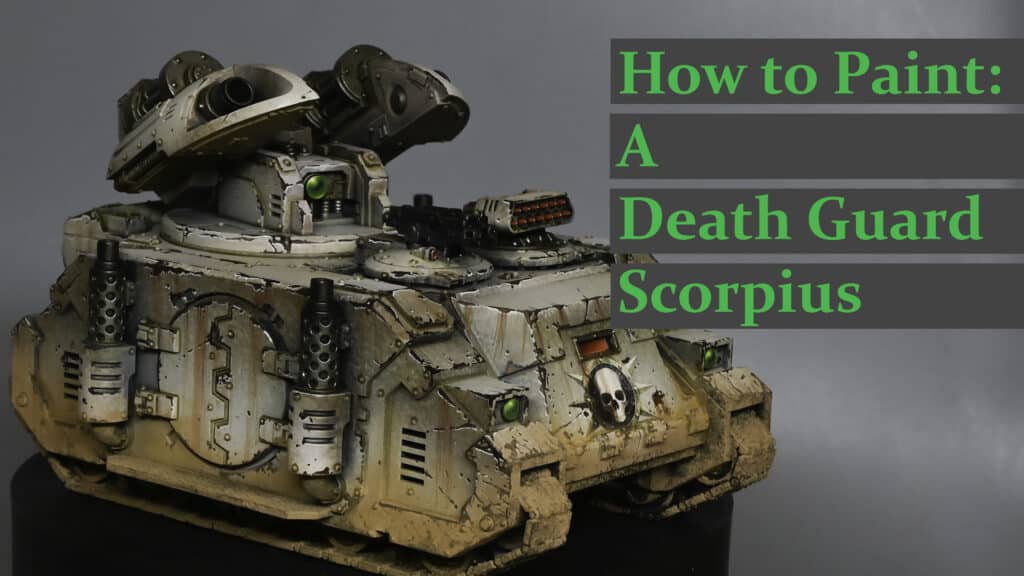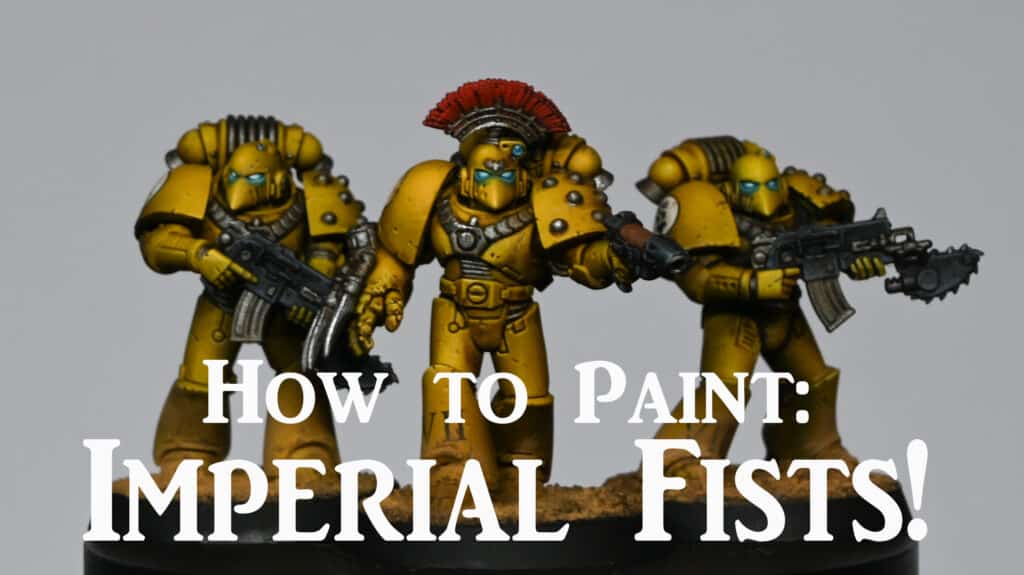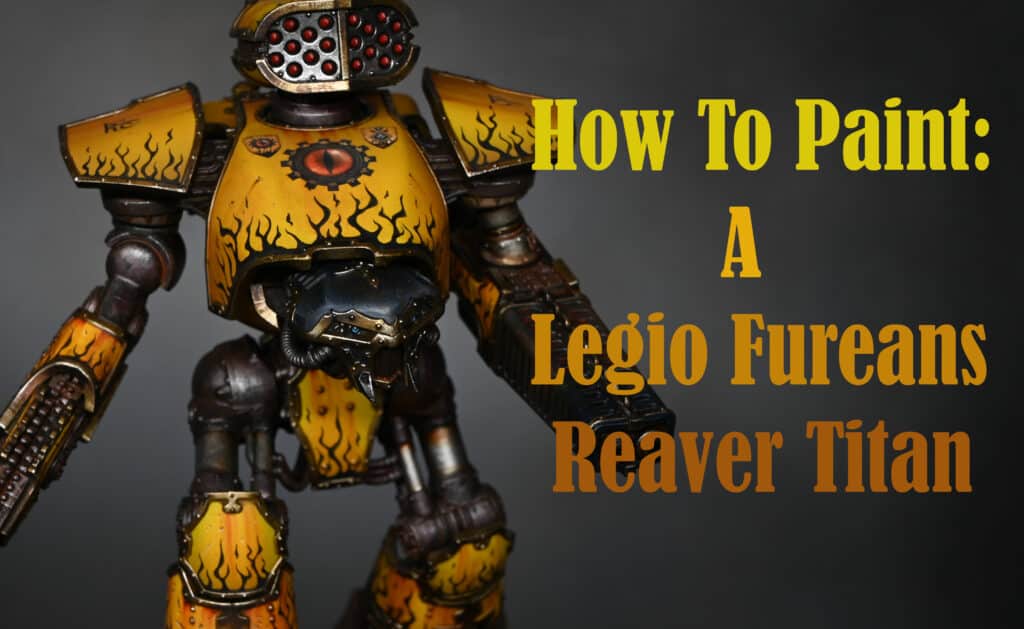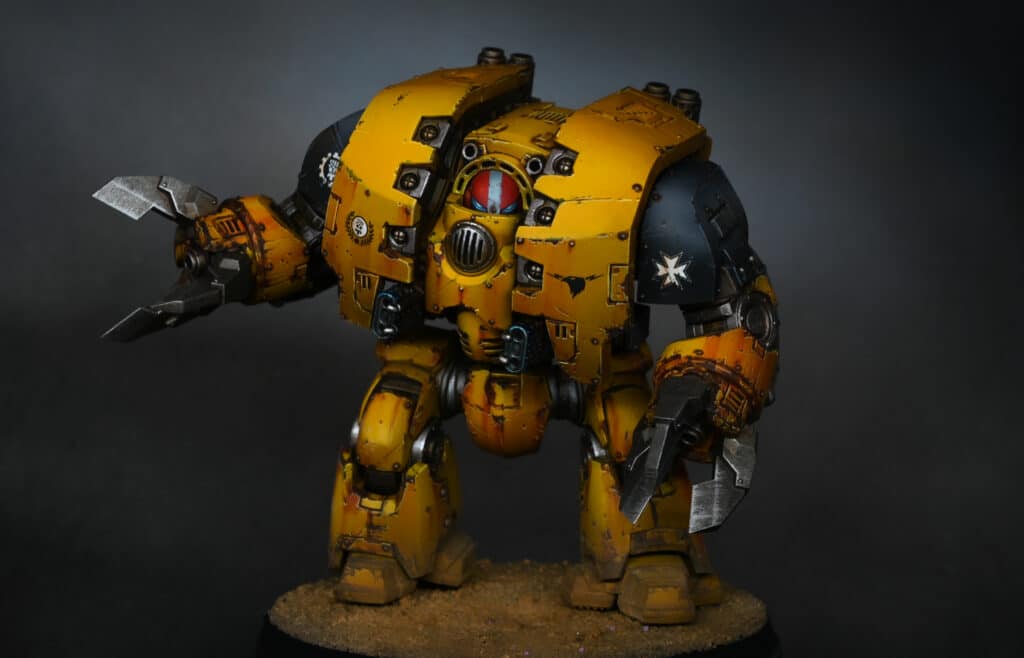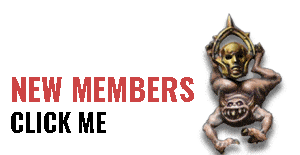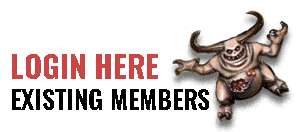Back when Volomir.com was Volomir’s Blog in 2014, the man himself interviewed me! The whole interview can be read here and below:
Volomir: Hi Richard, nice to have a moment to chat with you. The man of the moment! You have just been awarded Slayersword in recent Golden Demon 2014, but to be honest, I didn’t know you before (shame on me!). Tell us a bit about yourself, so we can get to know you better. How long have you been painting miniatures?
Richard: I don’t blame you for not knowing me, I am not well known at all!
I live in the county of Rutland in the UK and have a lovely girlfriend named Rebecca, who I have been with for 4 years. I’m just a regular kind of guy really: I love sci-fi and fantasy films and books, play rpgs and strategy games on the pc and enjoy building pcs. My degree from UCE in Birmingham was for illustration, which I find transfers well to models.
My model painting started when HeroQuest first came out; I just loved the figures and the fantasy setting. Wikipedia tells me that HeroQuest came out in 1989, so I guess I’ve been painting for 25 years! Now I feel old. After that I noticed a magazine called White Dwarf (issue 148) and I instantly became hooked on Games Workshop. It’s just carried on from there.
On a sad note, unfortunately my mother died of cancer on 20th August this year, so it has been a very difficult time recently for my family and I. I had only just decided to enter the competition before it happened, so it hasn’t been the easiest thing to complete my entry.
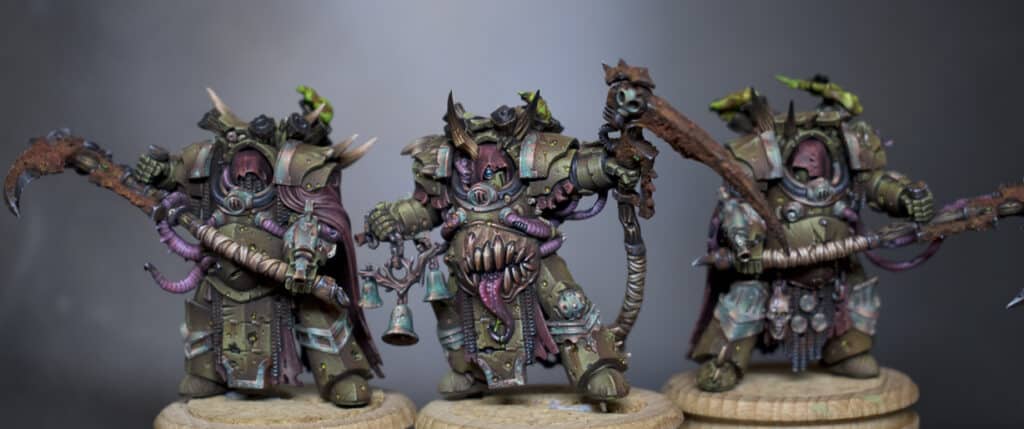
Volomir: Are you professional or is painting miniatures a hobby for you?
Richard: I’m sort of a silent professional. I have a few long term clients who have been wonderful to me. I also paint as a hobby, although all of my personal models are painted with the intention of them being gaming pieces.
Volomir: Are you a regular on painting forums or websites in the internet? Do you have your work in places like CoolMiniOrNot or Putty&Paint? Have you been participating in Golden Demon a lot?
Richard: I’m a member on CoolMiniOrNot and Warseer, although I have a bad habit of hardly ever posting anything. You can find me under the name “Demonrich”, which has no relation to my Golden Demon! I’ve used that name online since Half Life 2 first came out as I needed an online name!
I entered Golden Demon a few times in the 90s, and finally got a Silver Demon for my Keeper of Secrets in the Fantasy Monster category in 1999. That was the last time I entered a painting competition until now.
Volomir: Do you think there is a difference between the way that miniatures are painted in the UK and the rest of the world, especially in Europe?
Richard: This is a tough question for me to answer as I don’t pay too much attention to where each model comes from. I sometimes think that many models from Europe are more flamboyant and colourful than the UK, but I could be wrong!
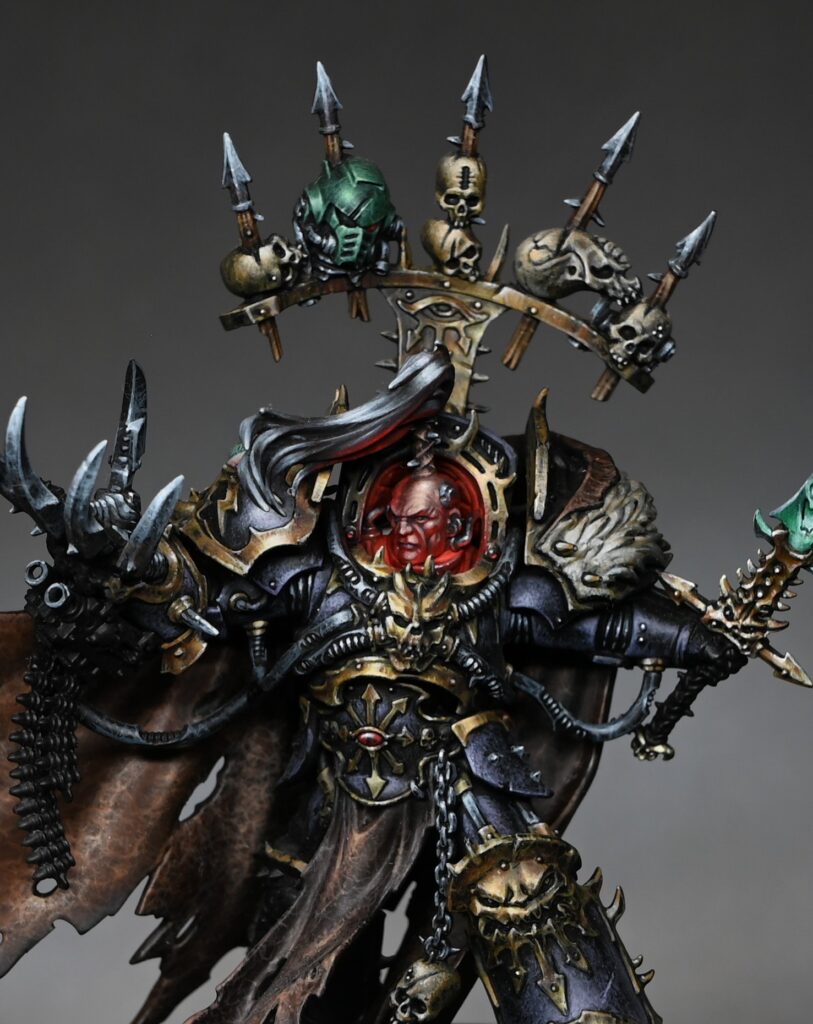
Volomir: How was winning the Slayer Sword for you? How did you feel? Did you see it coming at any point during the day?
Richard: It is hard to describe the feeling; my mind went blank and my mouth dropped open. I hope no-one caught a photo of me then as I’m pretty sure I looked like a fool! Once I got the sword I was over the Moon, and just wanted to get home to show my family.
The idea of winning the sword during the day never entered my head. It was quite funny really as I saw the judges looking at the finalists on the table and my model was off to the side with some other finalists while they were examining three others. I just thought I wasn’t even being considered for a trophy. I wasn’t disappointed as my aim was to get a finalist this year. It had been a long day for me and I was looking forward to leaving early to get some rest. Also I wanted to go home and get a closer look at a Forge World Knight Lancer I had bought myself.
I actually nearly didn’t turn up to the event. It had been so stressful trying to get the model done while dealing with my mother’s death and I had run out of time. There was a lot more I wanted to do to it, but I was rushing and the paintwork was starting to suffer due to it. I wasn’t happy with the model, and was sick of the sight of it. In the end I decided to go just to enjoy the day and not worry about how I did.
Volomir: Which other miniatures where the ones competing against yours for the Slayersword in your opinion?
Richard: That is a really tough question. There were many models that I thought were at least as good as mine! To be honest it was tricky to tell on the day as the lighting wasn’t great and I think some of the entries didn’t look as good to the audience as you couldn’t see them properly.
There was one entry by Michal Pisarski that I was aware of from seeing the WIP in a facebook group, and the painting on that was flawless. I didn’t think I’d be competing with it, because I hadn’t even considered the Slayer Sword. I was told it was a very close decision, so I’m sure he must have been one of the people being considered.
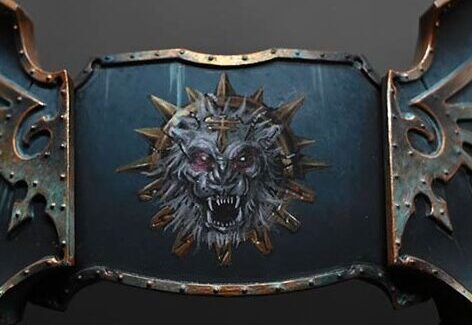
Volomir: Your win is particularly historical since it’s the first time that Best of Forgeworld and Best of Show (Slayersword) are given to the same piece. There has always been lots of chatter around what makes a miniature “Slayerable” but every year, especially in UK, all hypotheses are proven wrong. What makes a Slayersword winner in your opinion? Do you think there is any commercial criterion behind Slayersword choices?
Richard: Sometimes I wonder if they just roll a dice when selecting the Sword winner. The standard is so high between all the winning entries that I don’t know how the judges pick an overall winner. I’m sure the judges have to start looking at other criteria, such as how the pieces fit the theme of the warhammer universe, just to help make a decision. I have no clue about commercial decisions, although if they wanted to push a product, I would have thought they would have picked a large, plastic kit as overall winner.
I don’t know if the Forge World Best of Show is judged differently to the rest of the awards, but I guess if the Slayer Sword winner is a standard Forge World model then it might seem awkward for Forge World to give the trophy to a different entry.
Considering I just won a Slayer Sword when I didn’t think I was even getting a trophy shows that I have no idea at all what makes a Slayer Sword winner!
Volomir: What’s your view on Warhammer Fest? How would you compare it to Games Days, and in particular Golden Demon 2014 with the rest of Golden Demons in the past?
Richard: As I haven’t been since 1999, I can’t really compare them. I know in 1999 the event was massive. There were a lot more Golden Demon entries then, but I think people used to enter just to get into the venue quicker!
I enjoyed Warhammer Fest 2014. It was a lot calmer, the queues to buy anything were short and it was easy to get to talk to the artists and designers. I’m not sure how good it was in terms of playing games as I didn’t go for that.
Volomir: The past few years have seen a decline in number of contests and participation in all Golden Demons around the world, to the point where we only have one right now in UK, and the attendance is also much lower than in the past years. How do you see the future of Golden Demons? Do you think this trend is going to continue?
Richard: I think it is a terrible, terrible shame that they have cancelled all of the other shows. I really enjoyed looking at all of the winners from around the world. I do wonder if they are trying Warhammer Fest as a new template and may use that in other countries, but my opinions are no better than anyone else’s. I can just say I hope they bring back Golden Demons for the rest of the World.
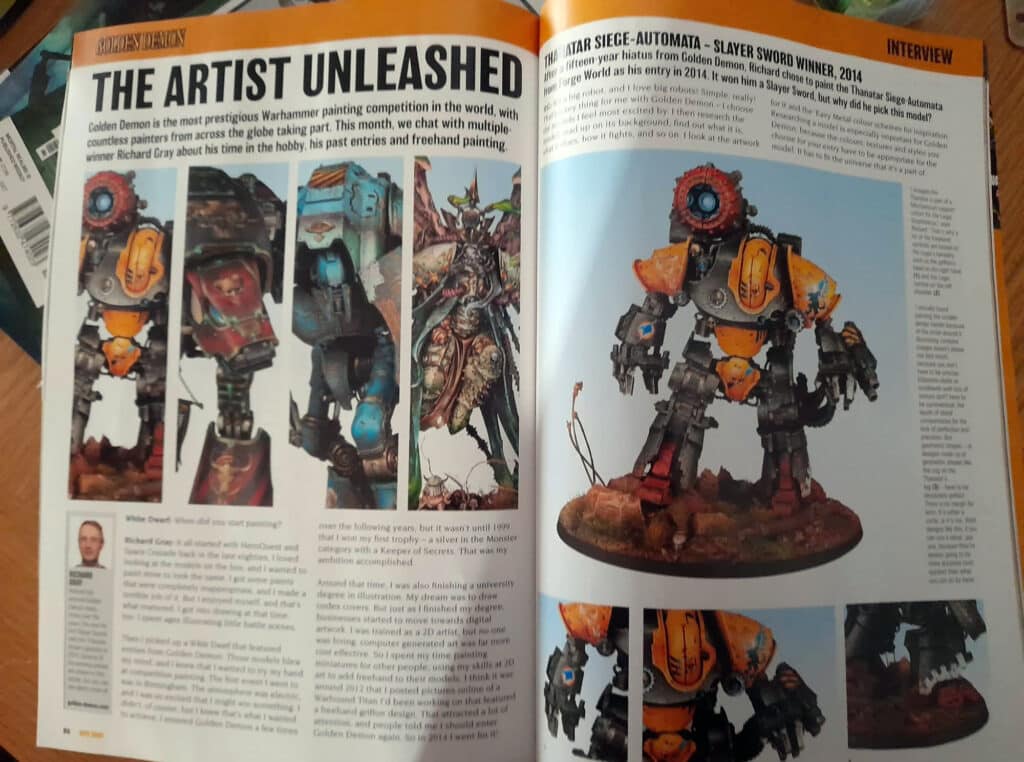
Volomir: Any artists that influence your painting? What are your favourite painters of all time?
Richard: As Games Workshop had such an impact on me, many of their 2D artists inspired me. I am a big fan of people like Geoff Taylor, Adrian Smith, Kev Walker, Mark Gibbons, John Blanche etc.
Others include people like Brom, Boris Vallejo, Giger, Zdzisław Beksiński and many others.
Unfortunately I don’t know the names of many model painters; I just have a huge folder on my computer with images of models that inspire me that I have collected from places like CMON.
Volomir: Do you attend other painting events apart from Golden Demon?
Richard: Nope! I might look into doing more, but no promises.
Volomir: Finally, any advice you want to give newcomers to the miniature painting world and competition in particular?
Richard: I don’t really paint as a competition painter, I just paint models I like, or things my clients want me to.
There are so many techniques that are being advanced all of the time, so do your research. Also, don’t just copy what you see, but adapt it to your style and preference. Just because something wins a trophy, it doesn’t mean it is the best style.
Finally, don’t be put off when you see a model you think is amazing. I see so many posts by people saying that they should just throw their brushes away as they will never be able to win a trophy. If you see something you like, be inspired by it. Everyone is crap when they first pick up a paintbrush.
More Free Video Tutorials
Free videos for logged in members – just sign up as a ‘friend’ to view and click any of the thumbs.
To explore all of these, visit this page!
If you don’t have an account, please sign up here! The website currently has over 350 video tutorials, plus step by step guides and PDFs. You can explore more free videos with a free “freebies” membership, or take the plunge and become a full subscriber for full access.
If you’d prefer to support me on Patreon, please visit: https://www.patreon.com/RichardGray
